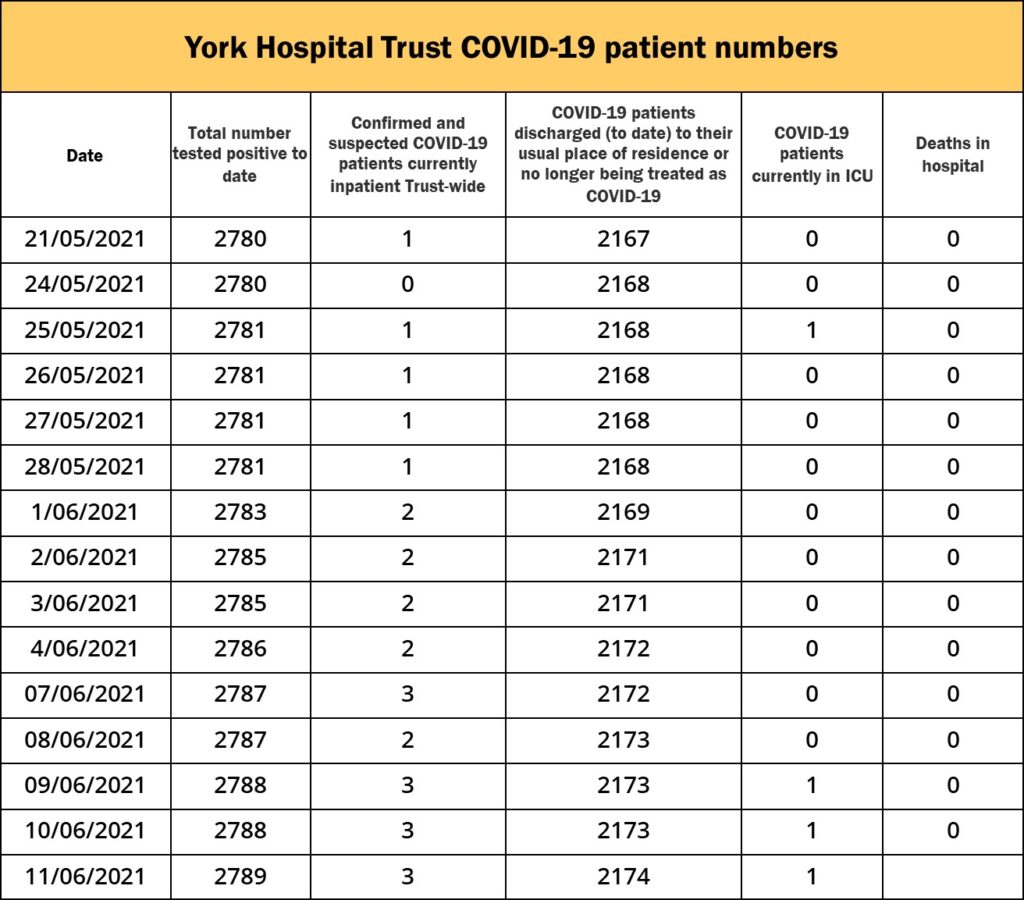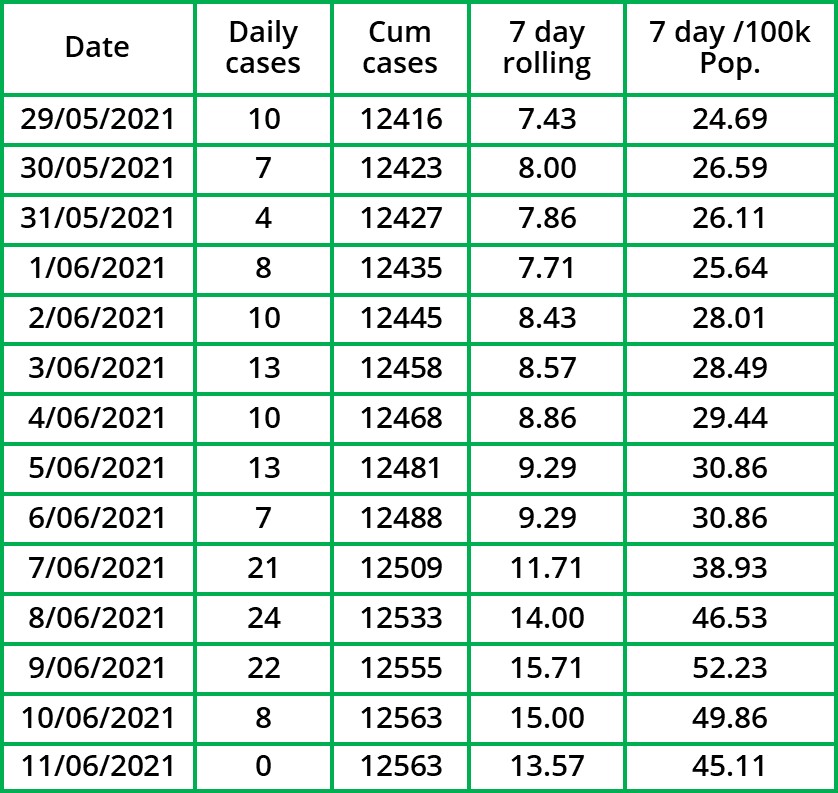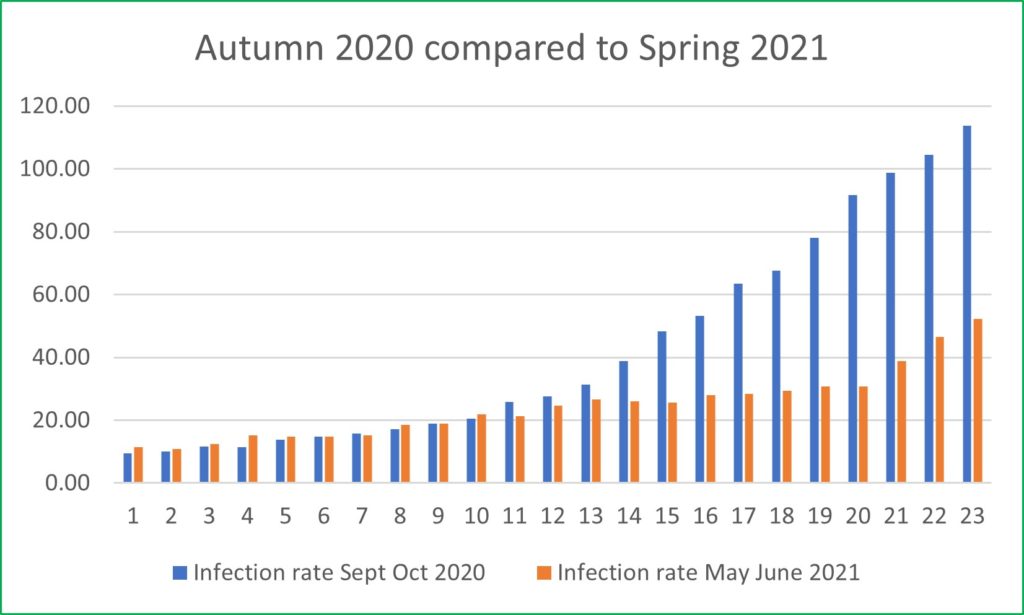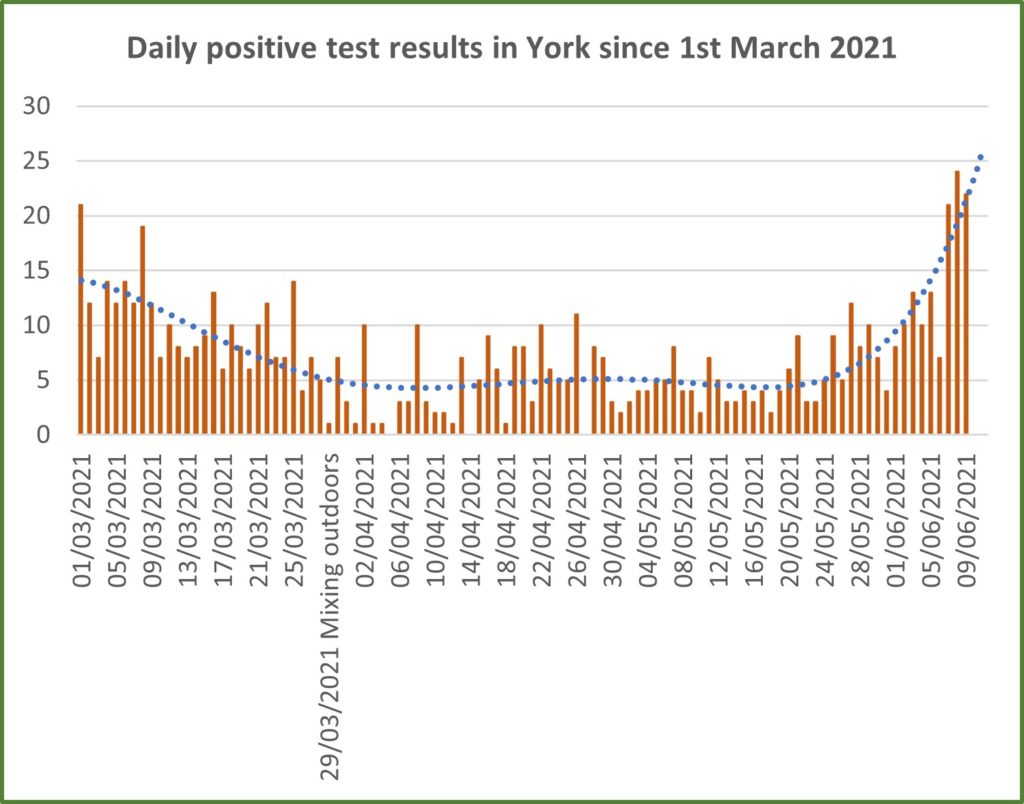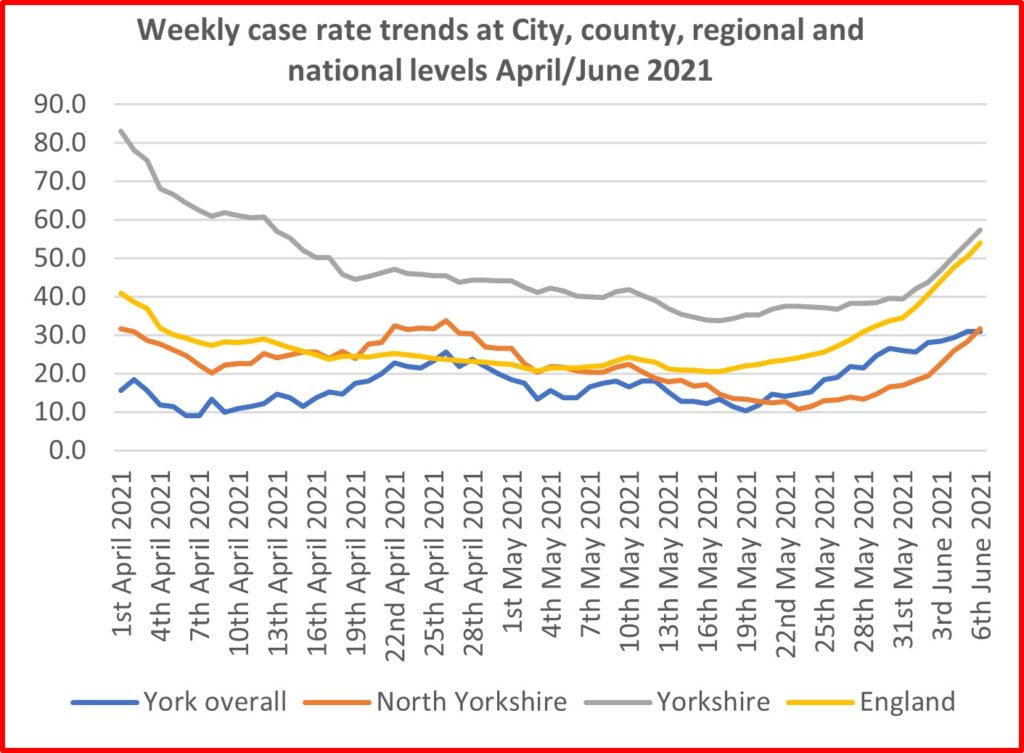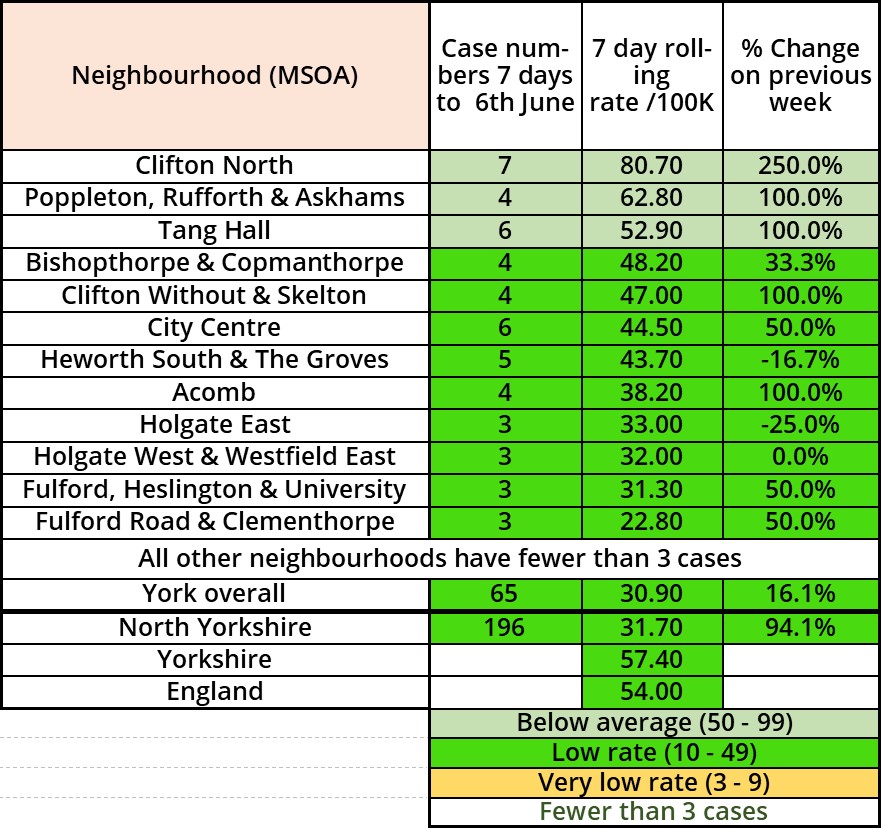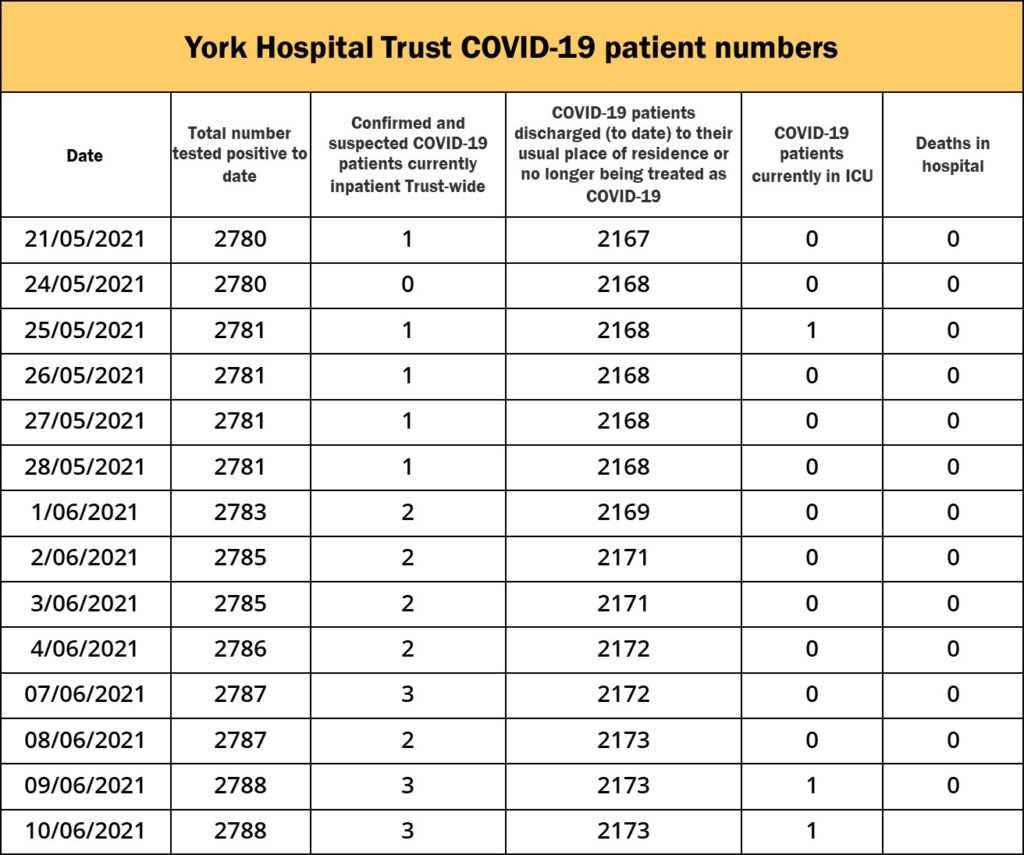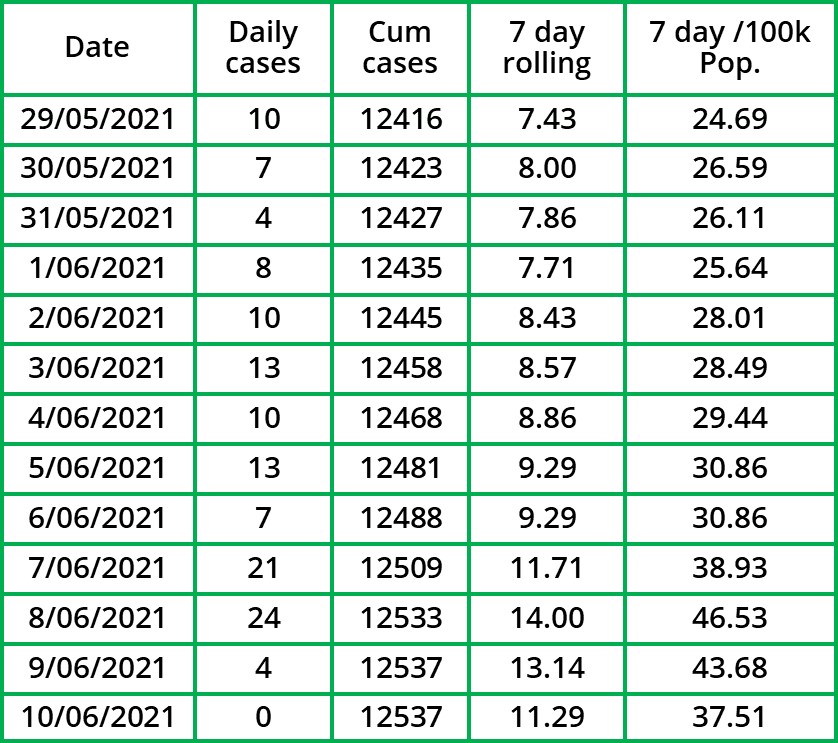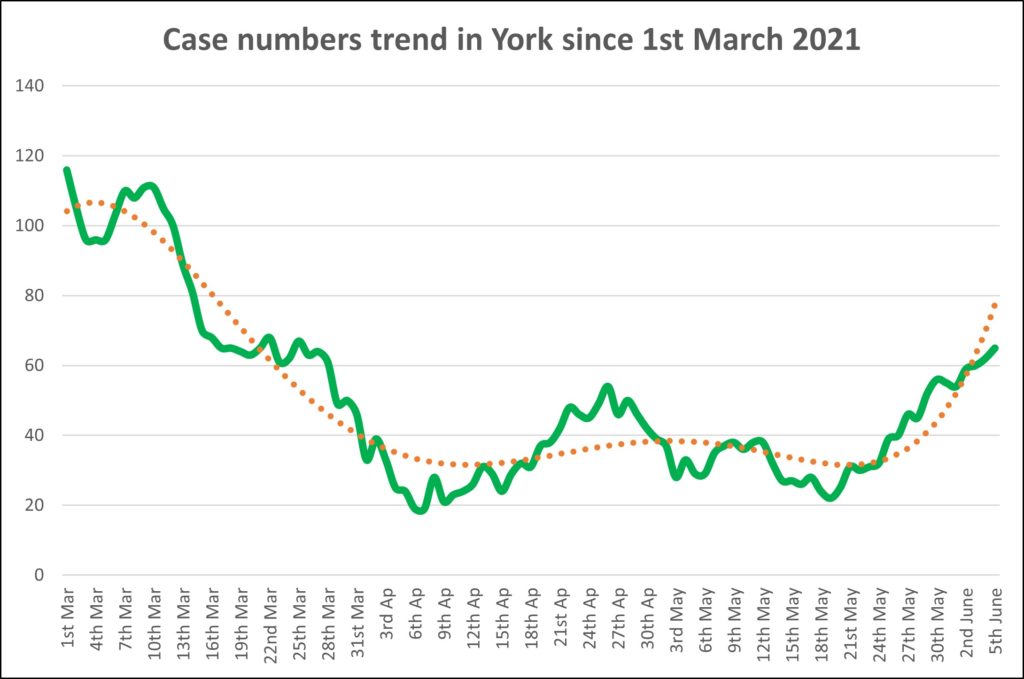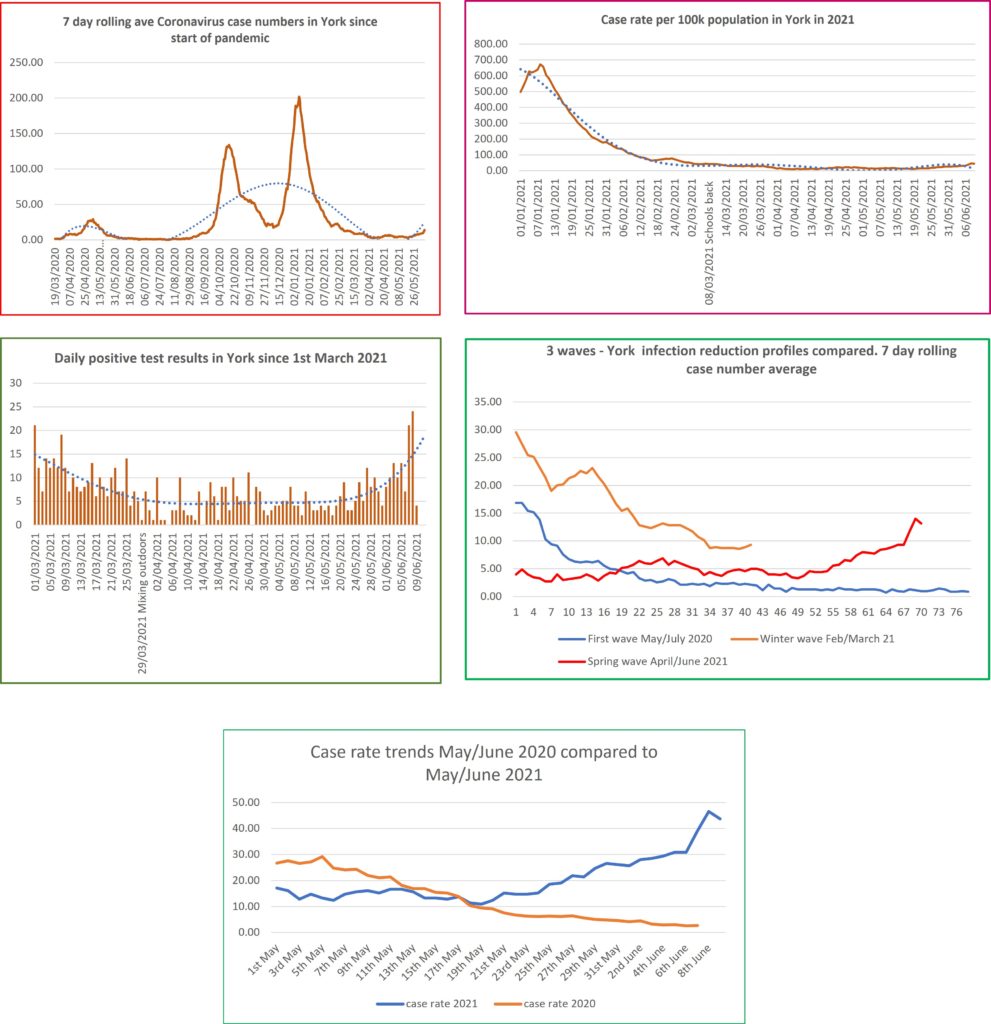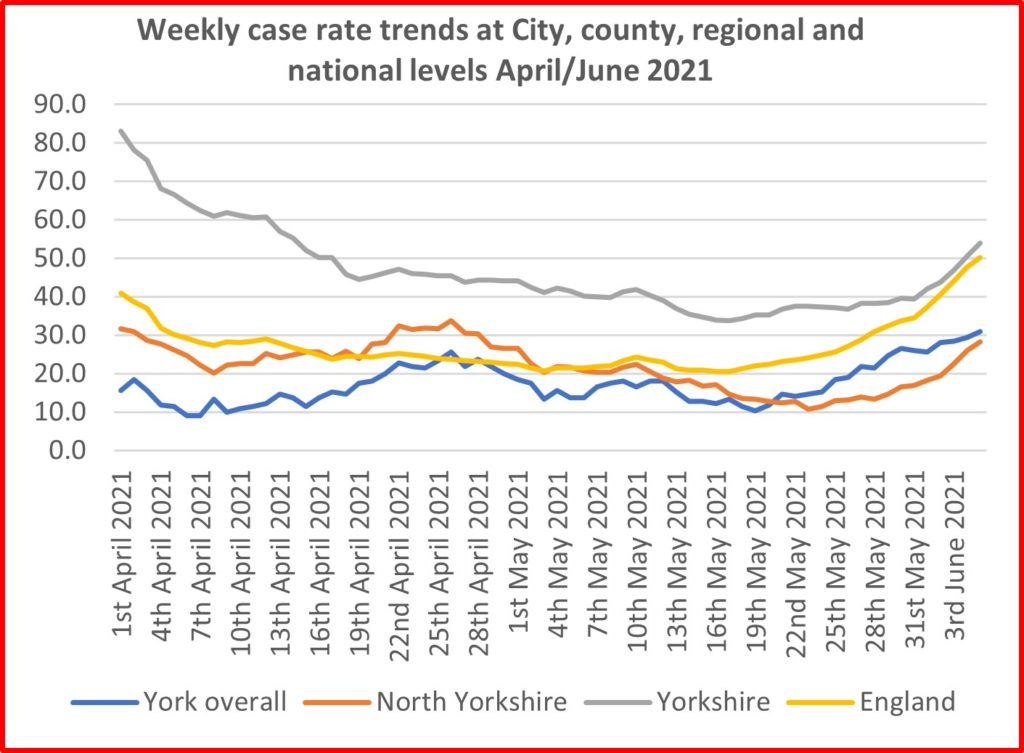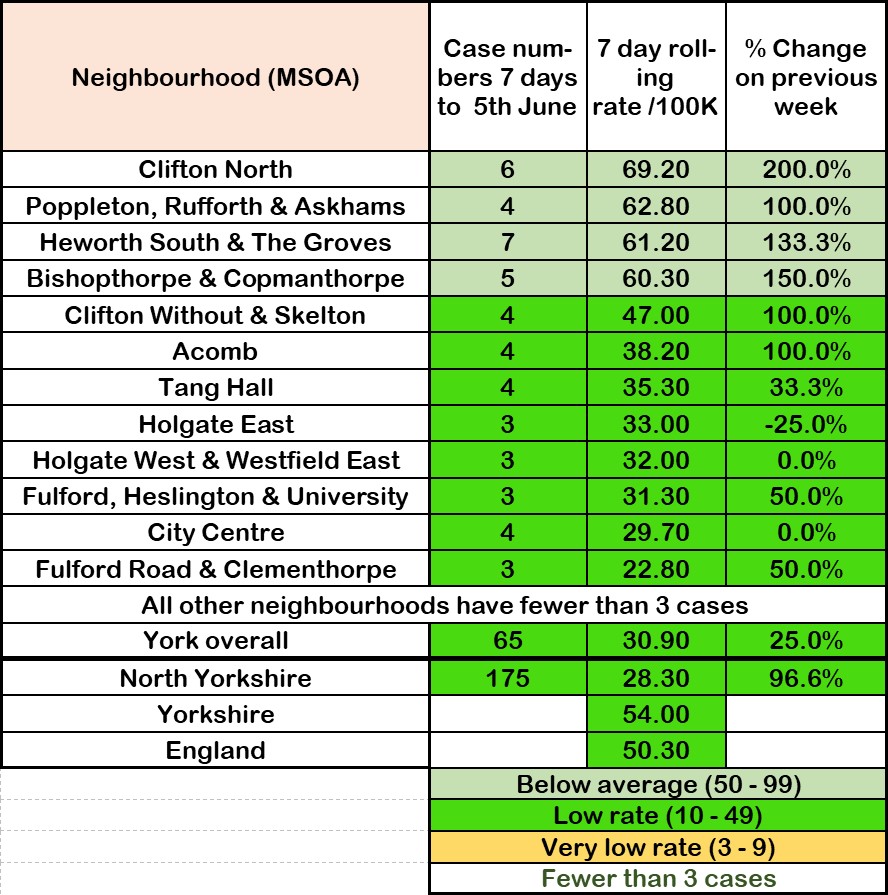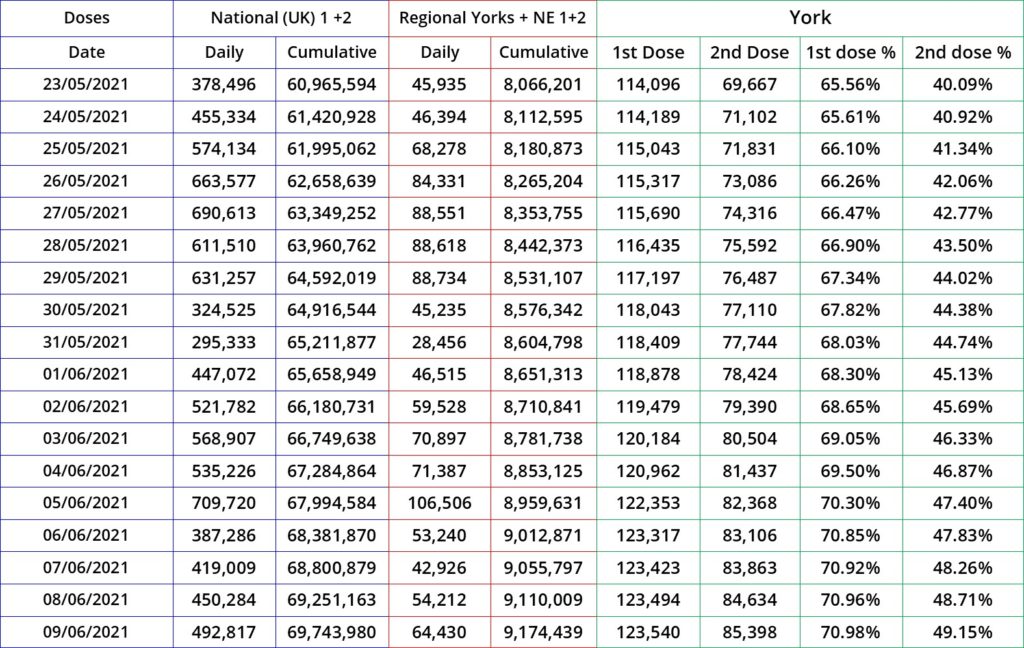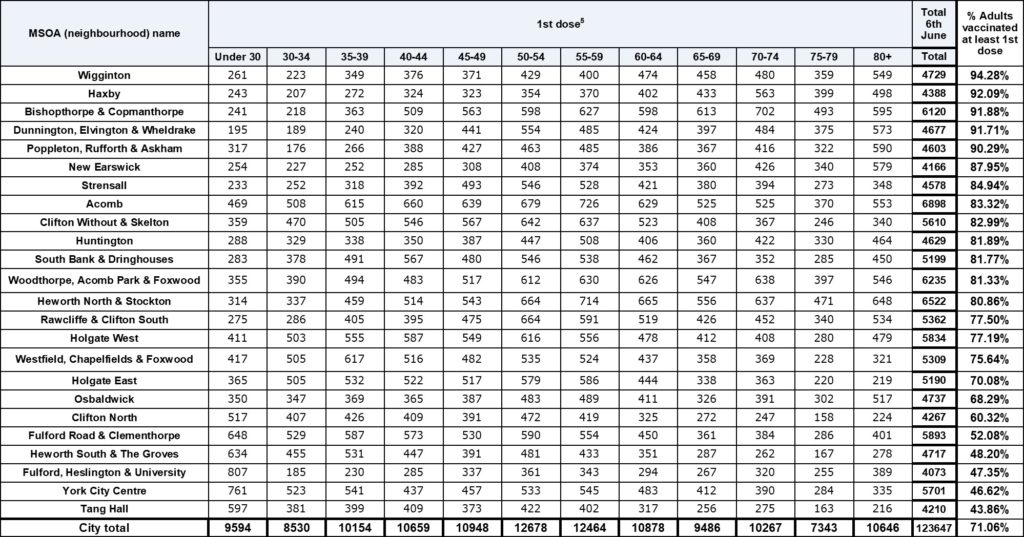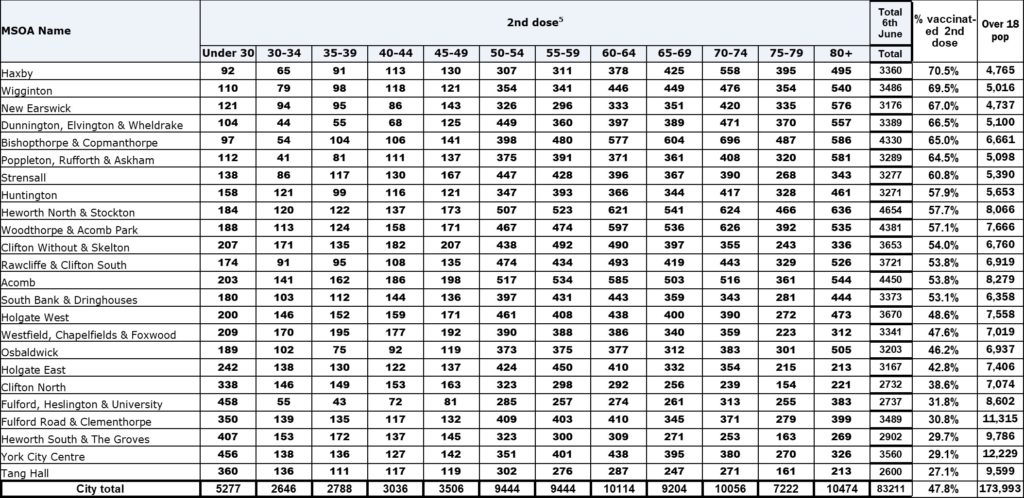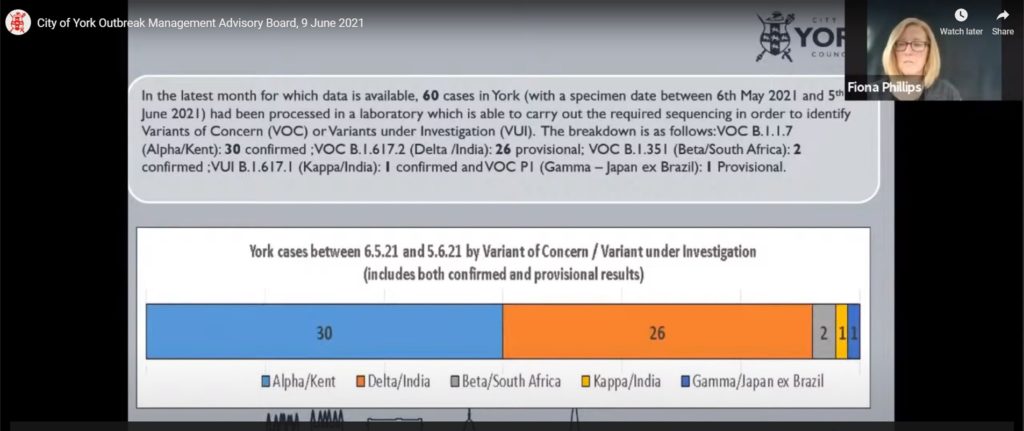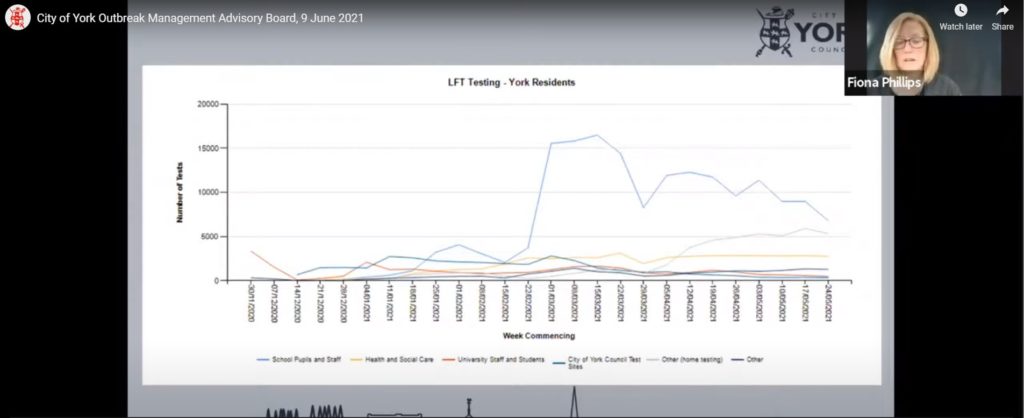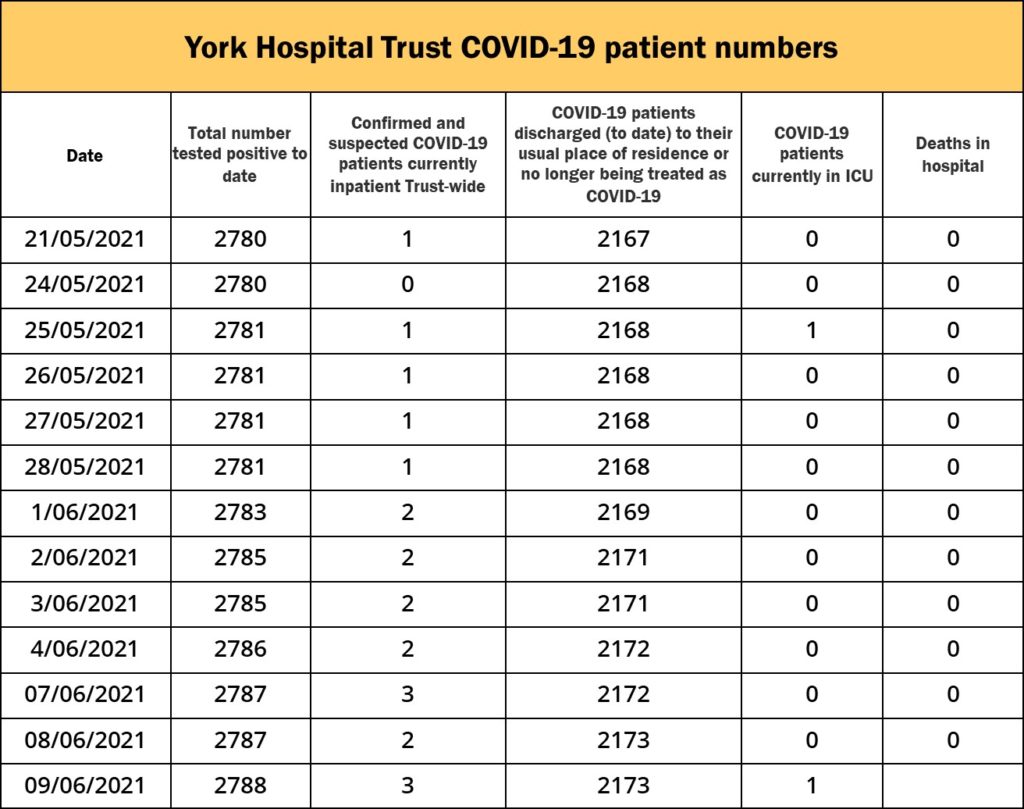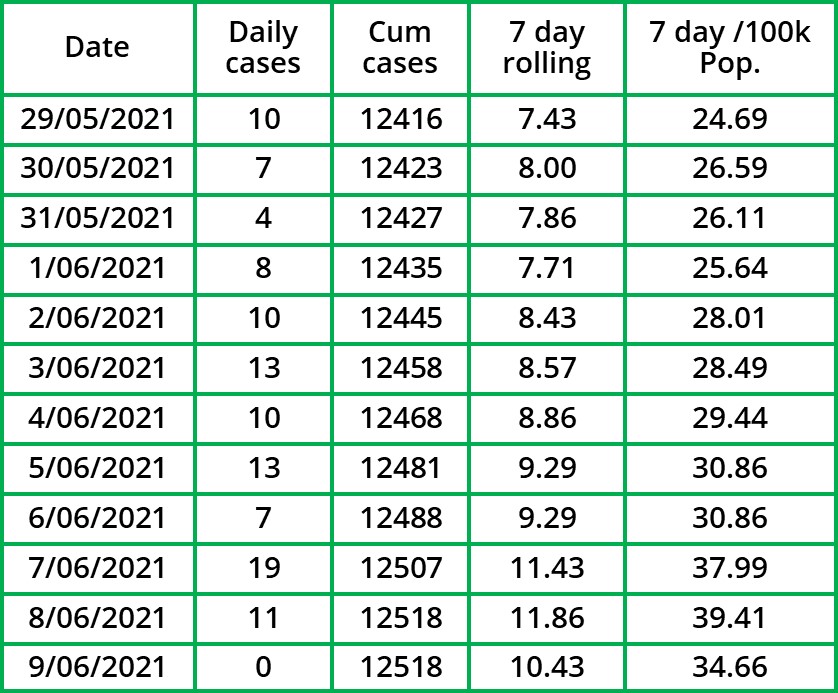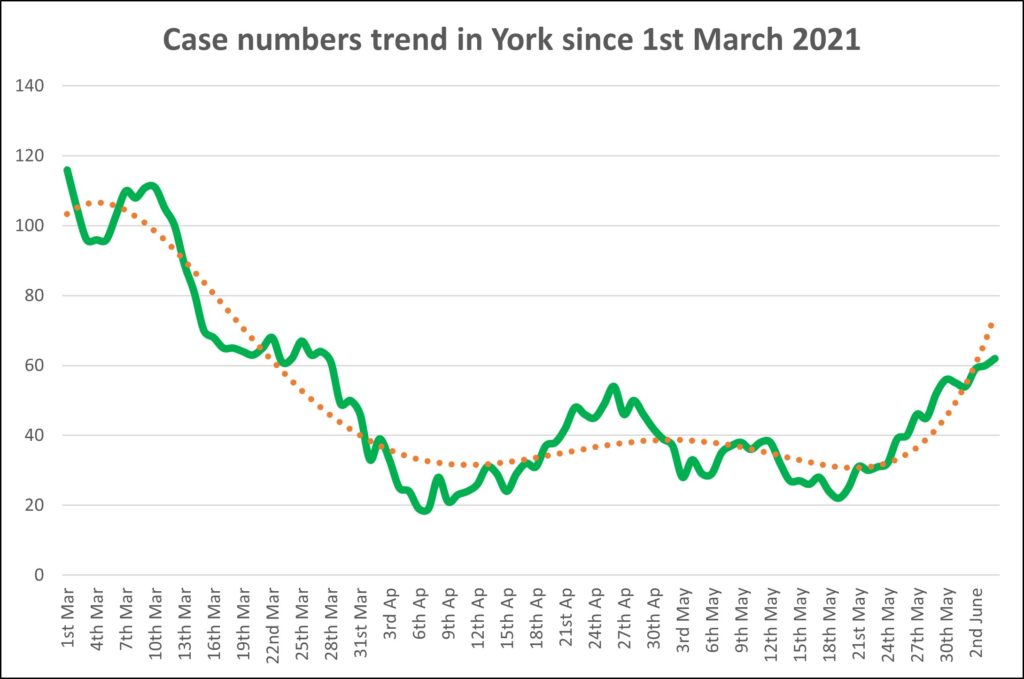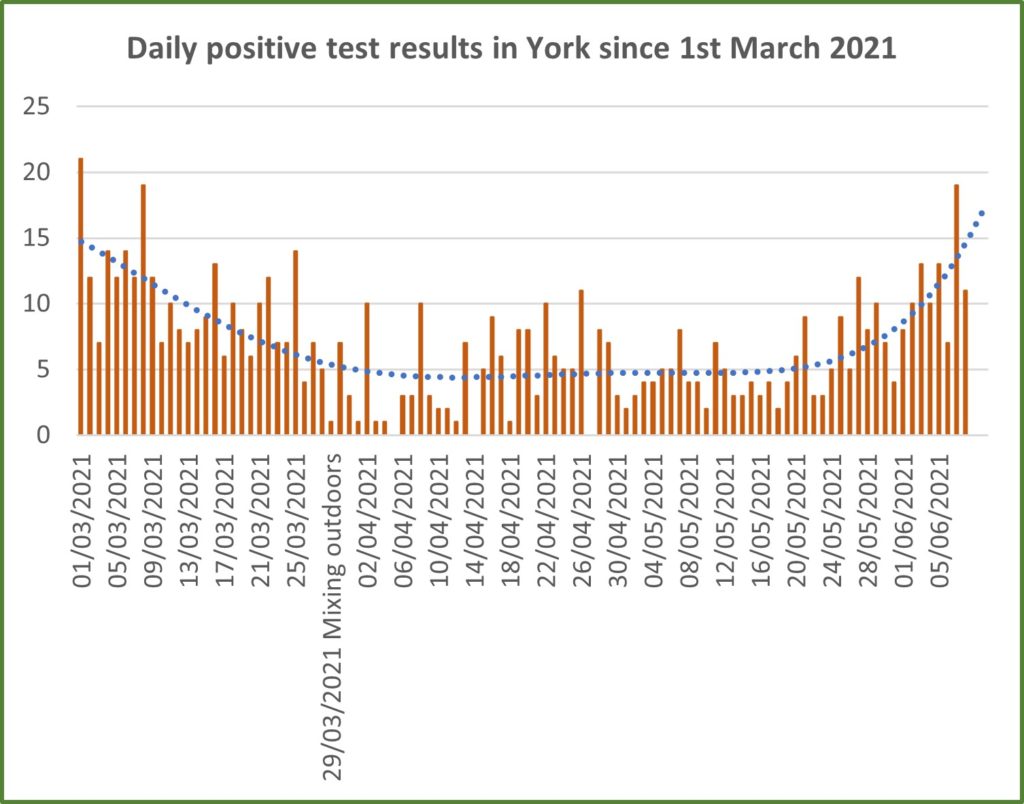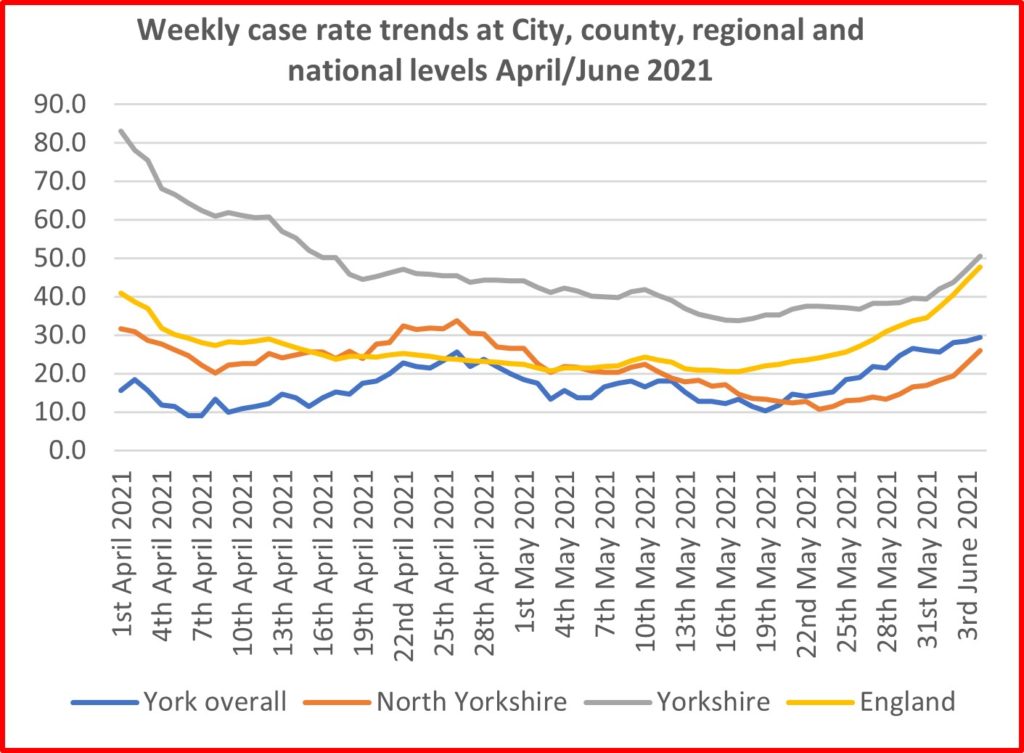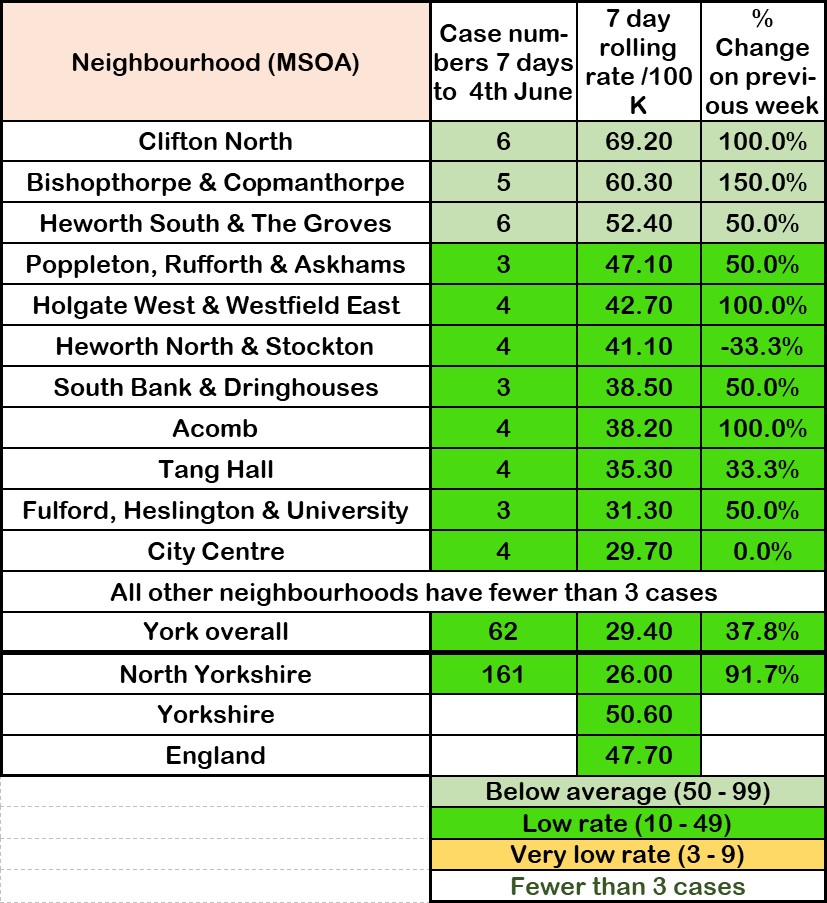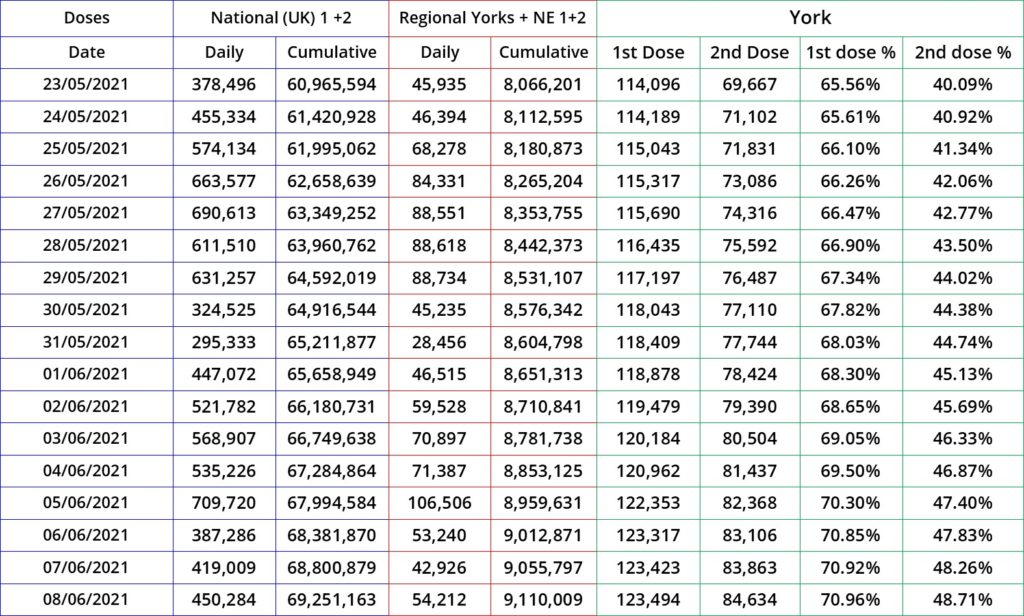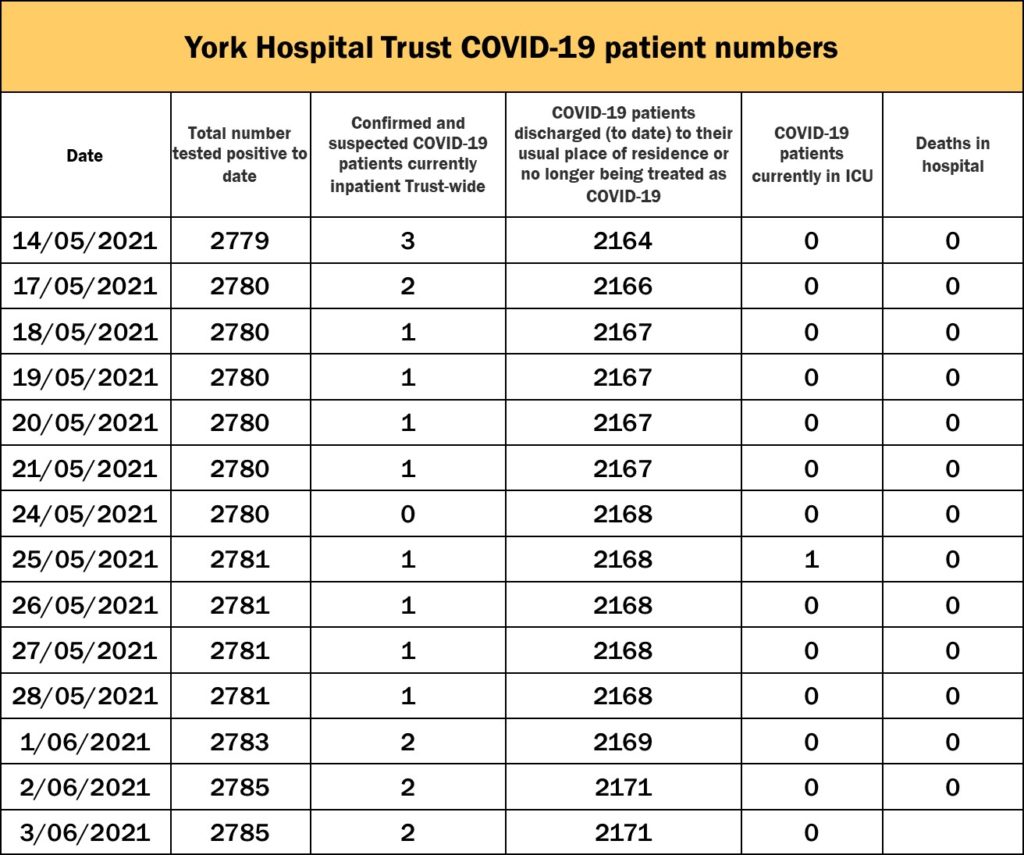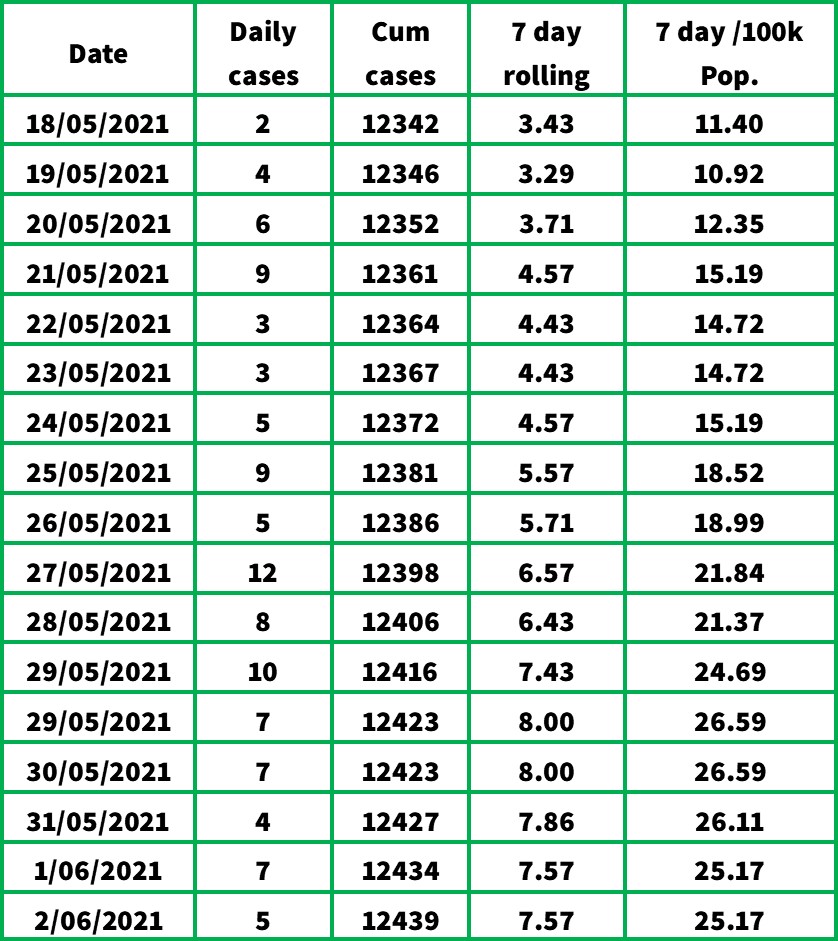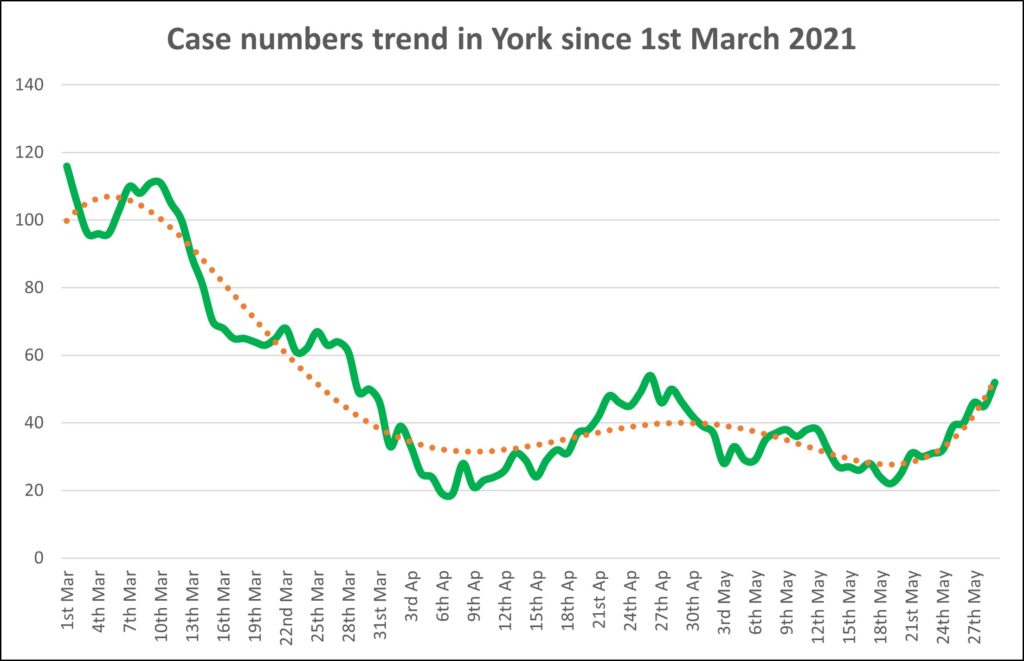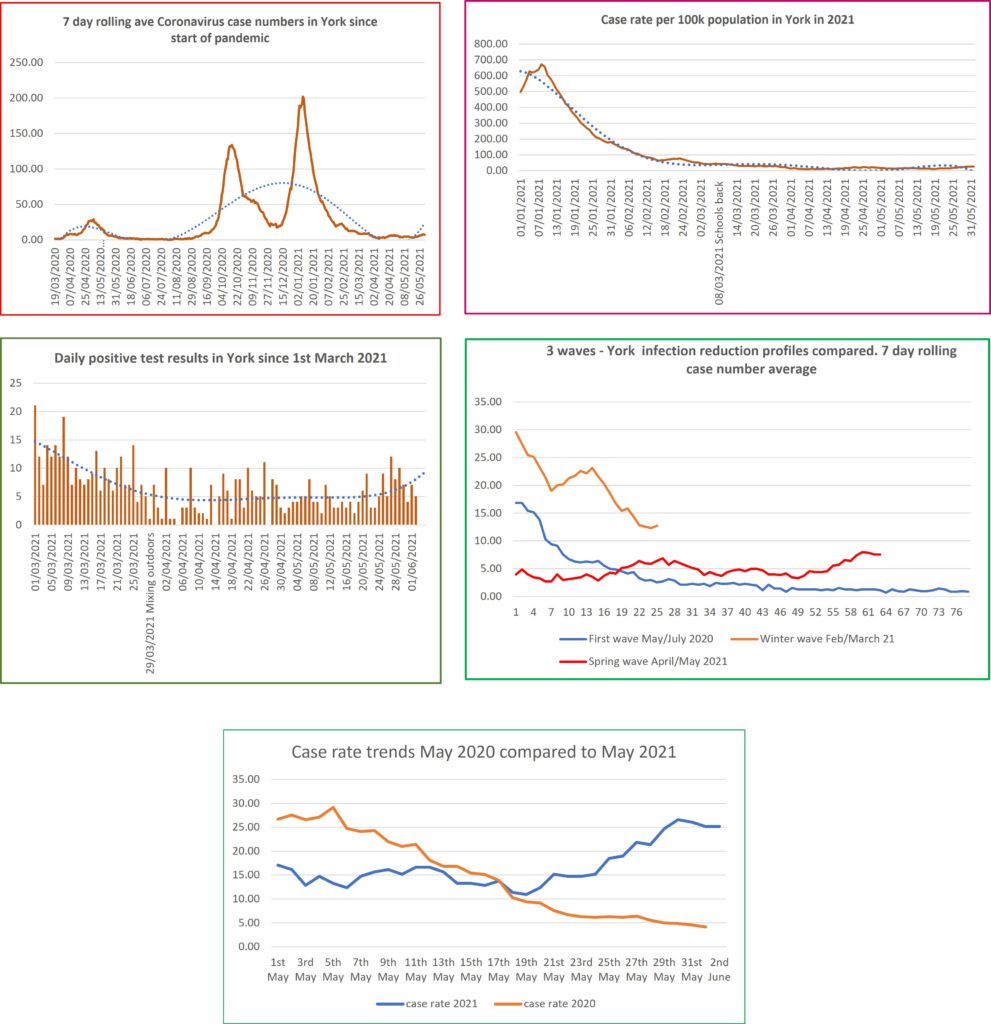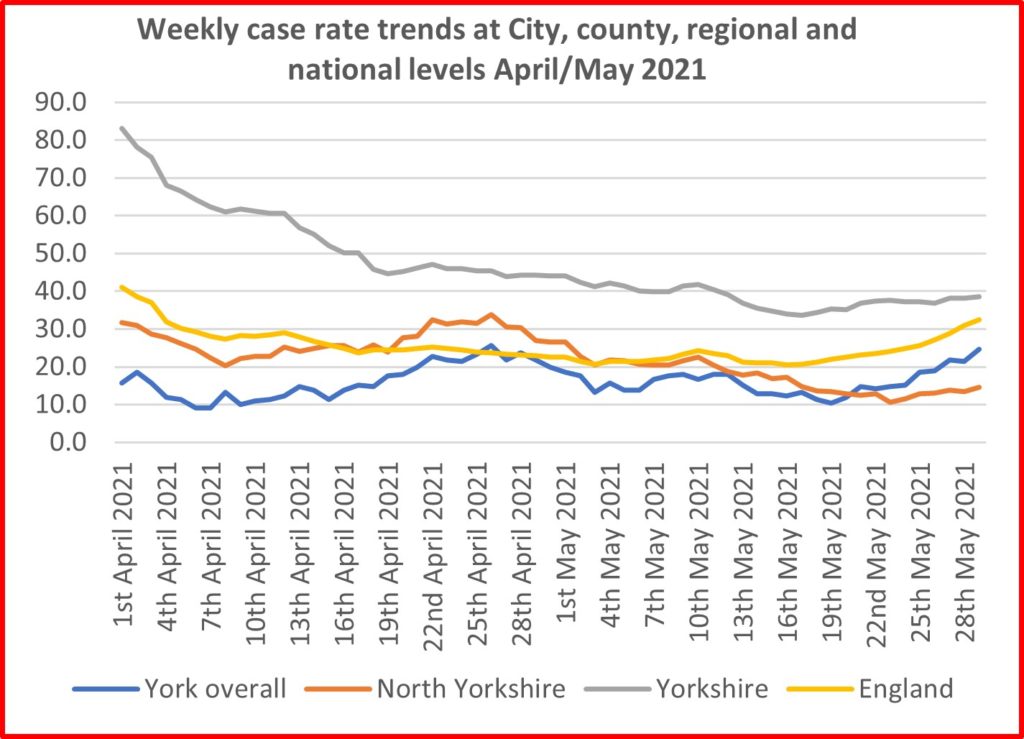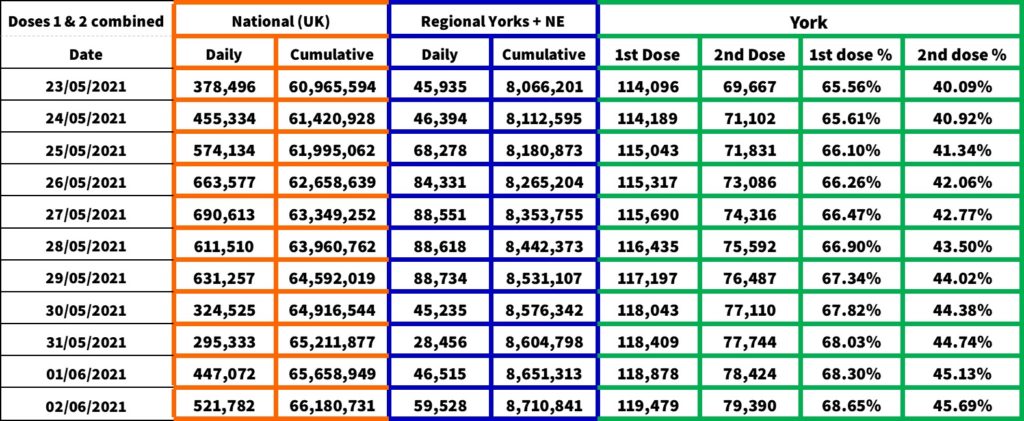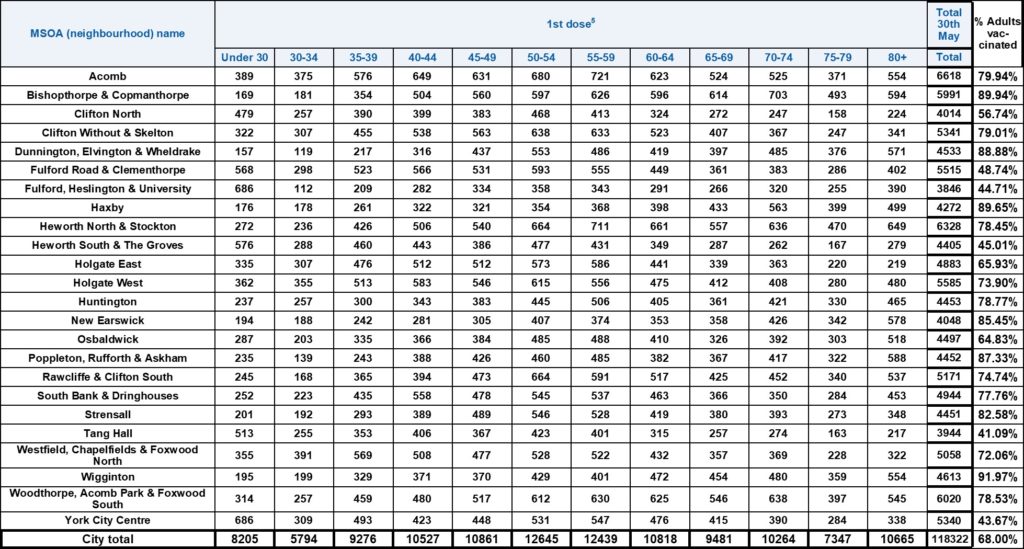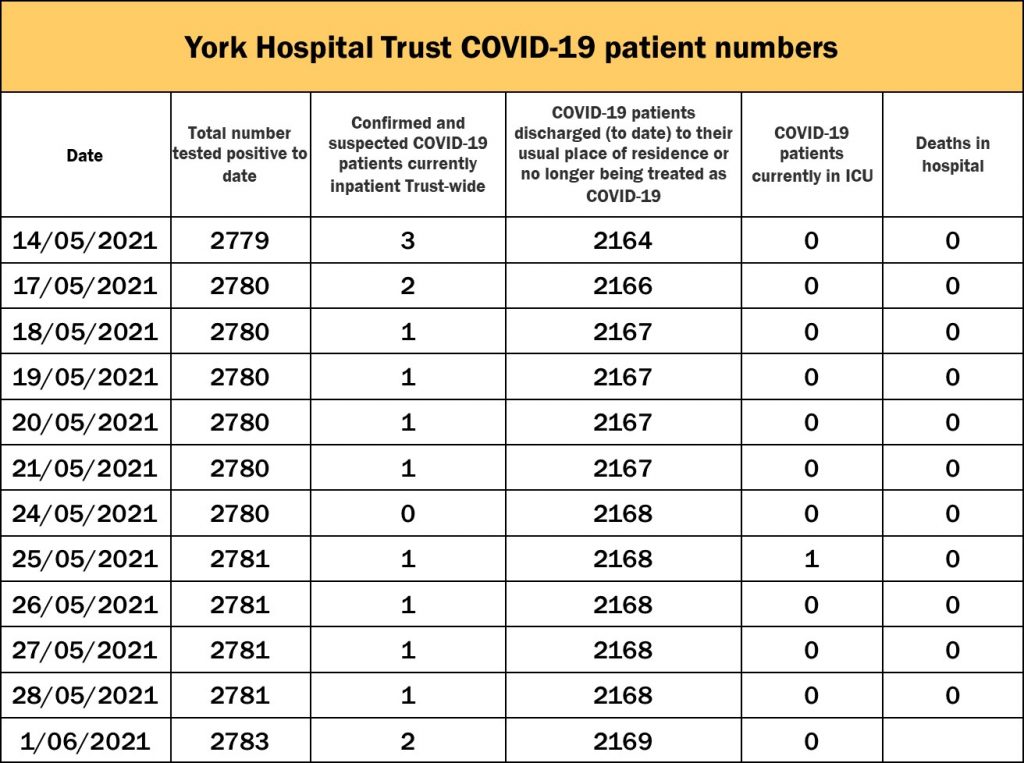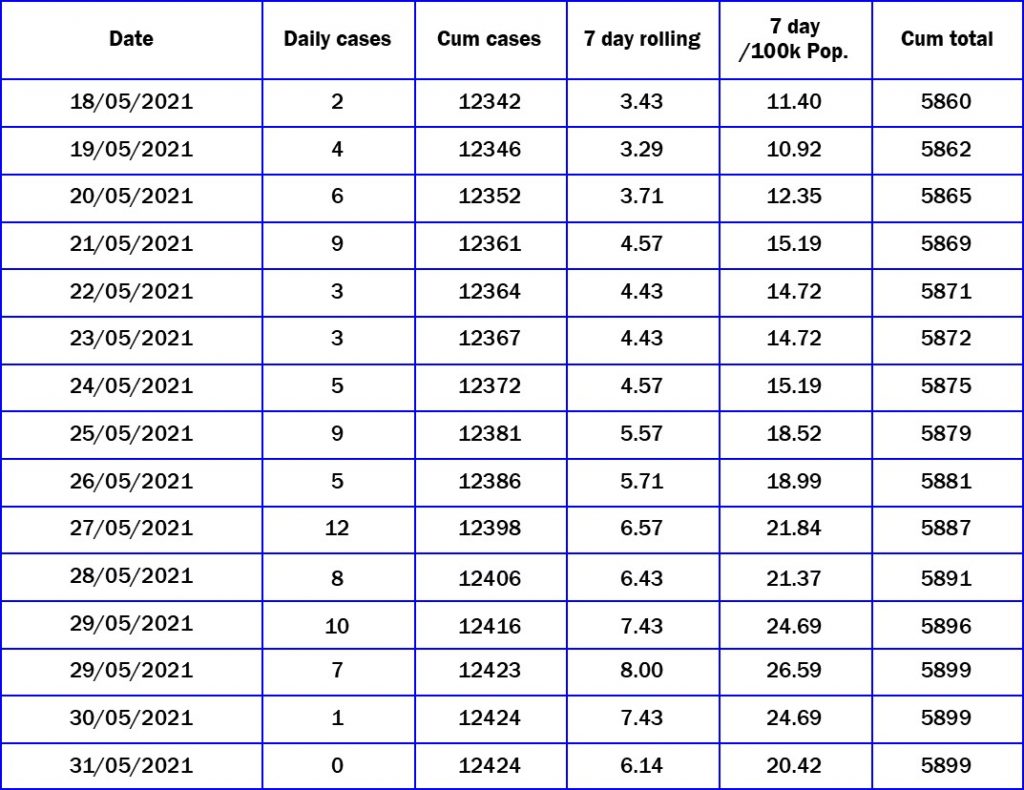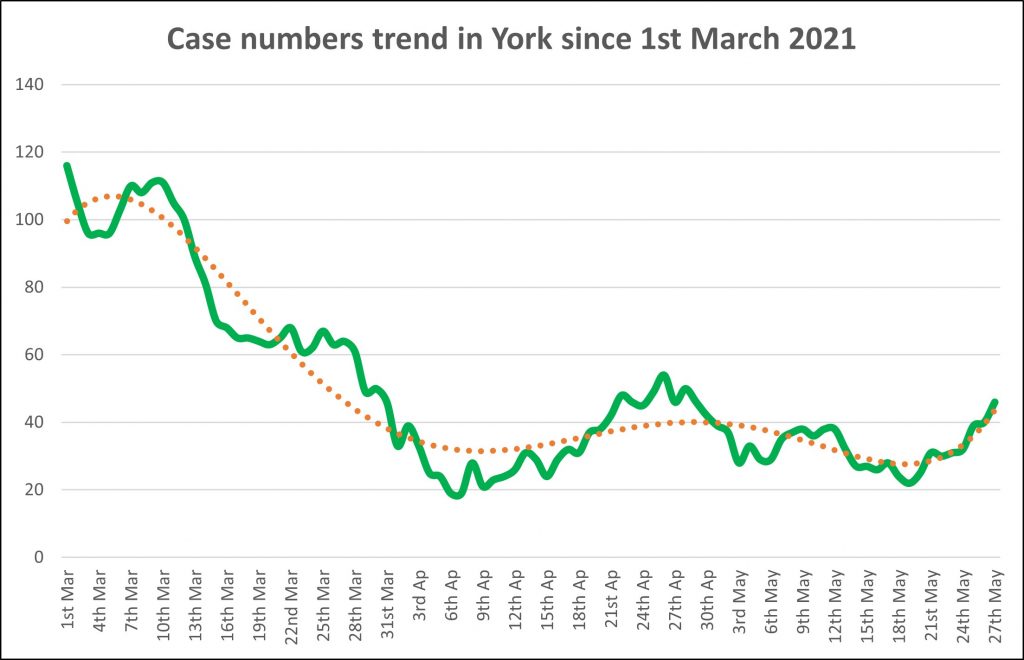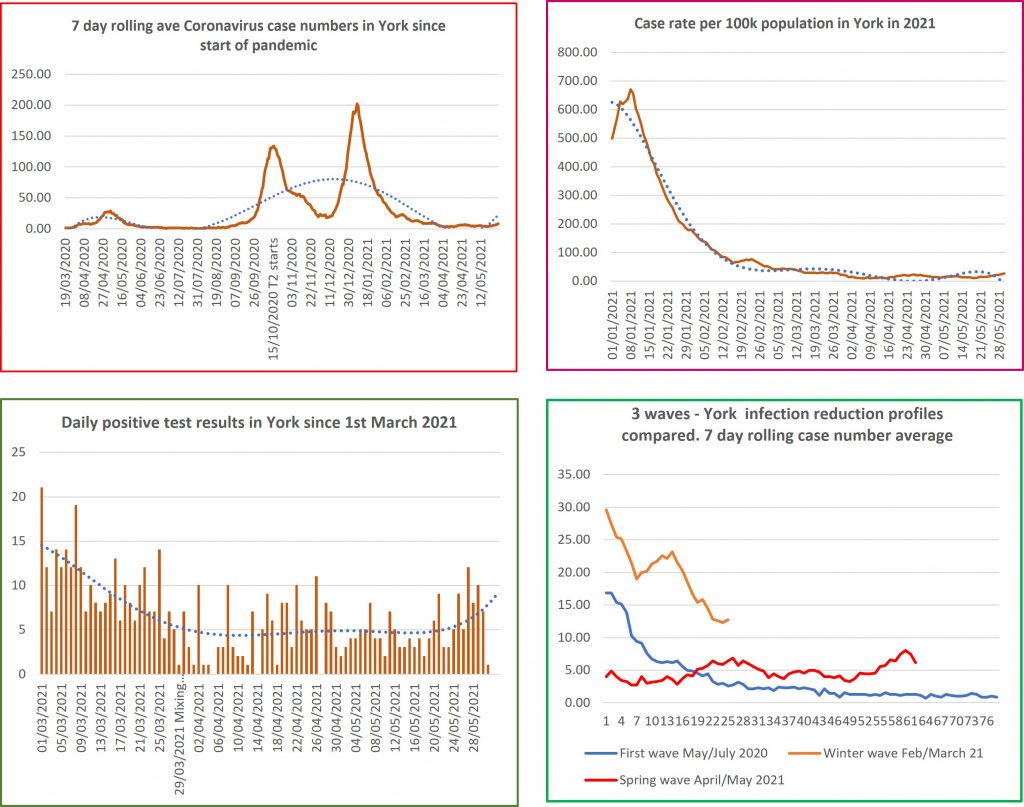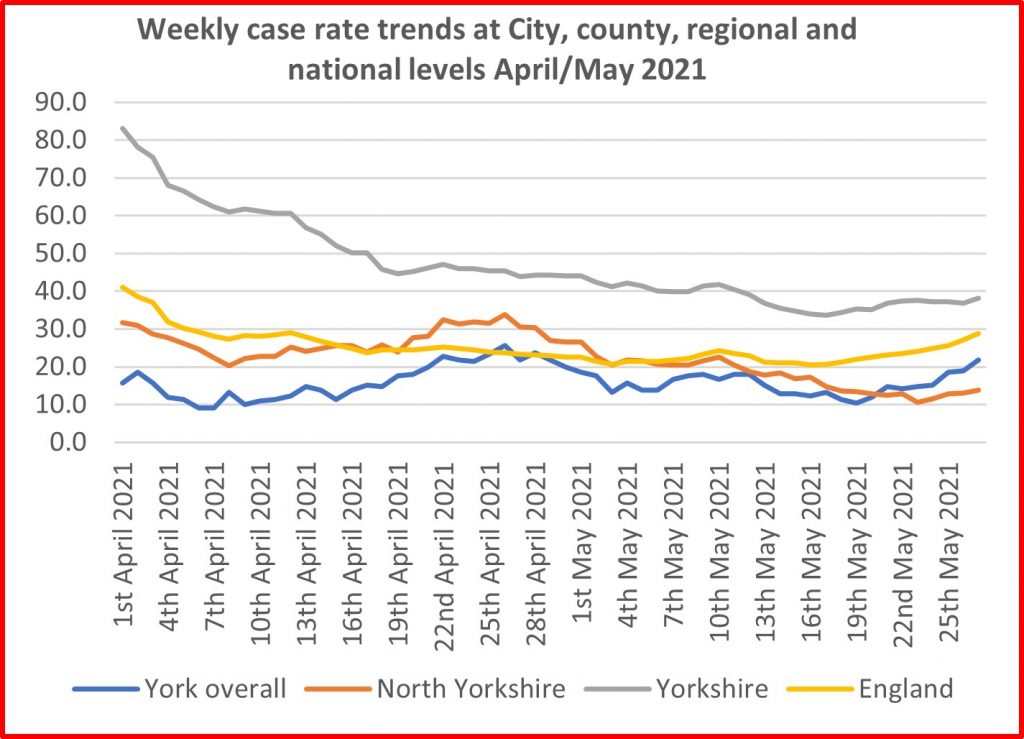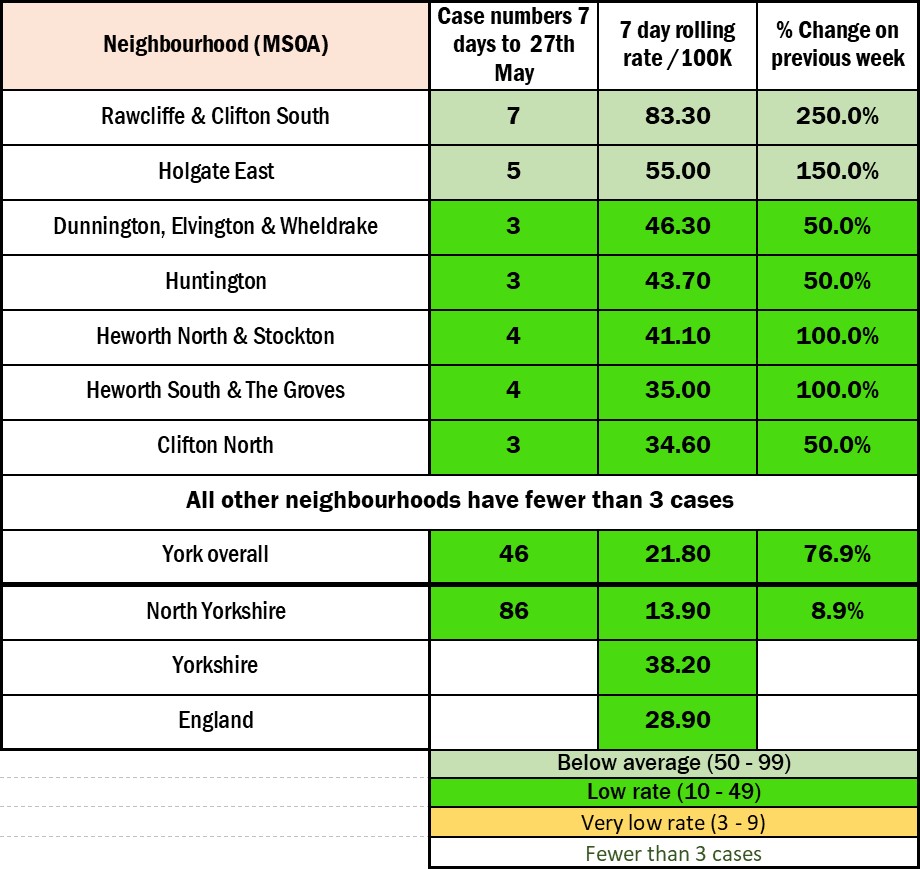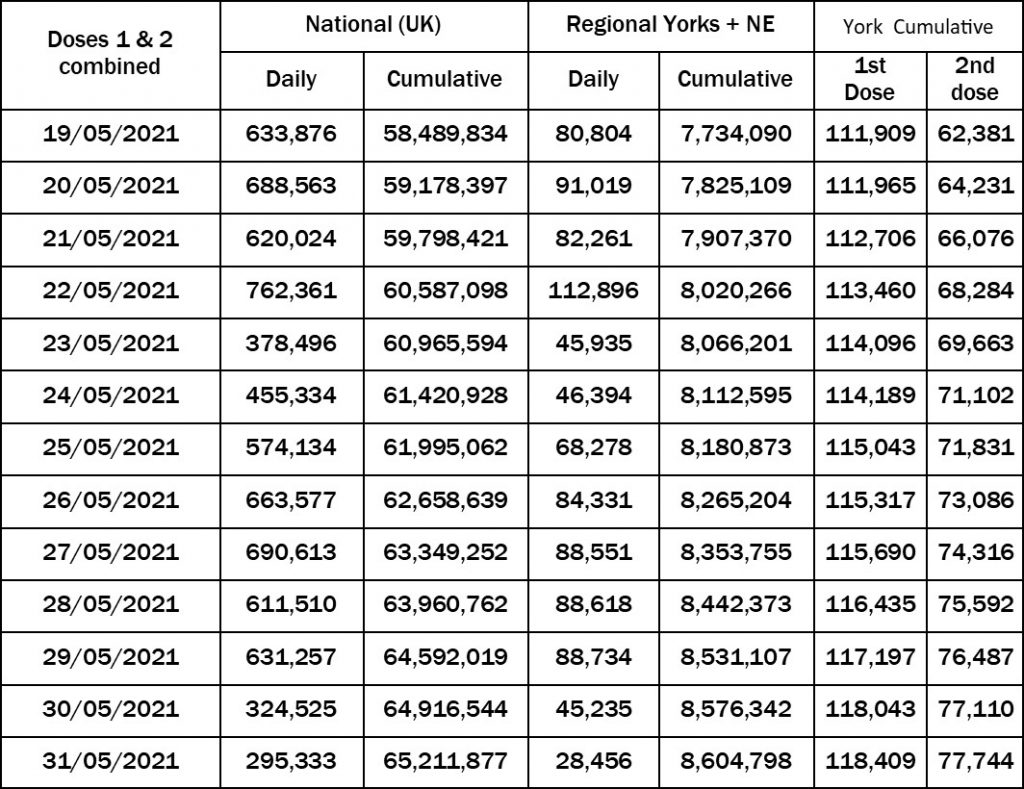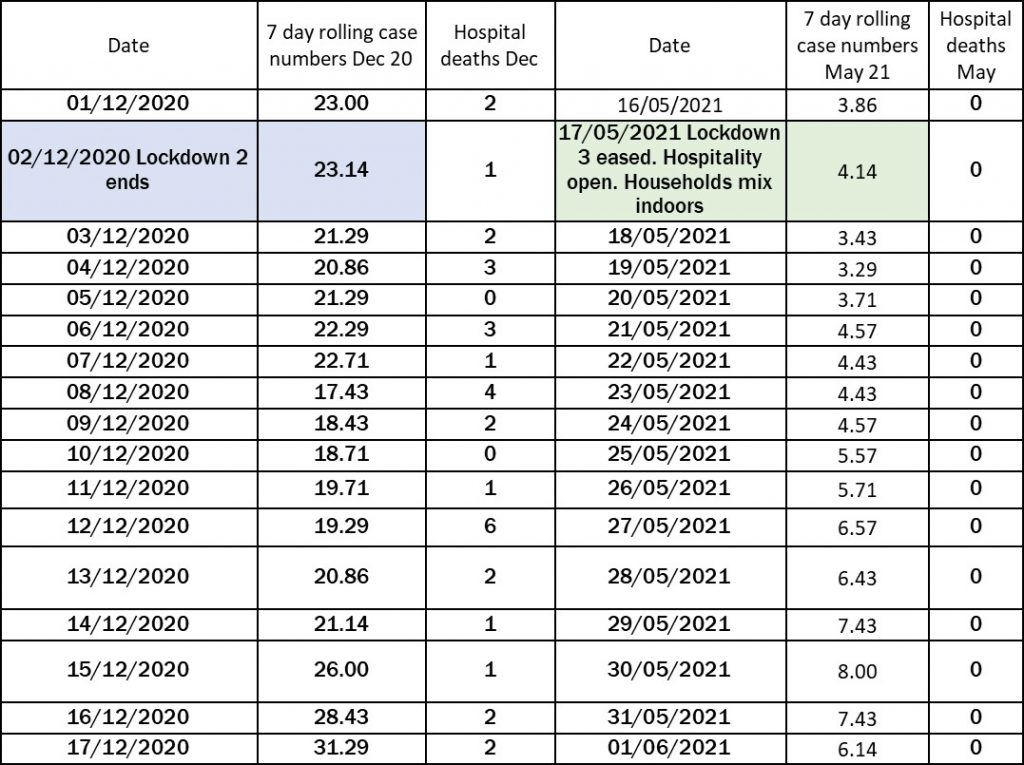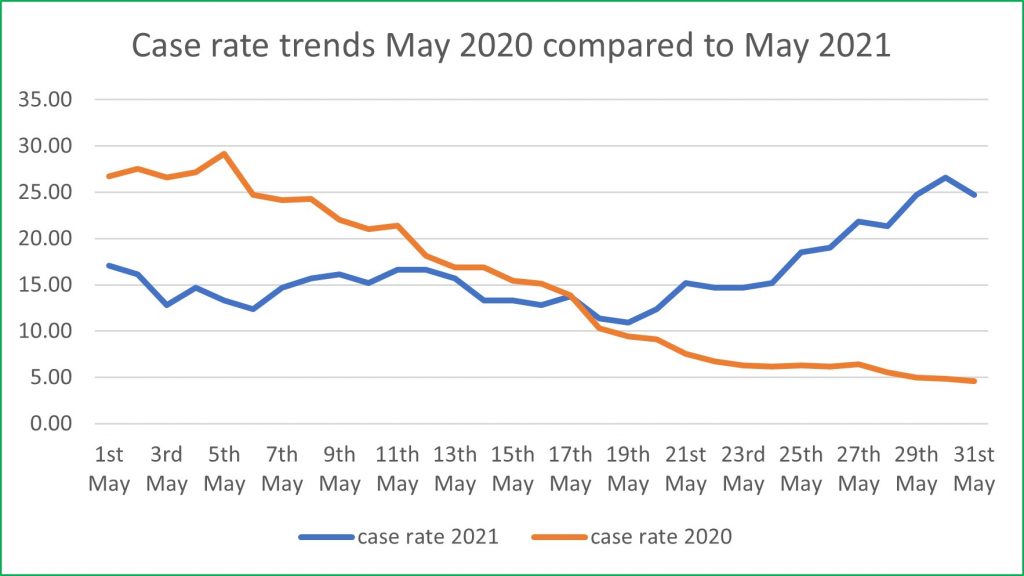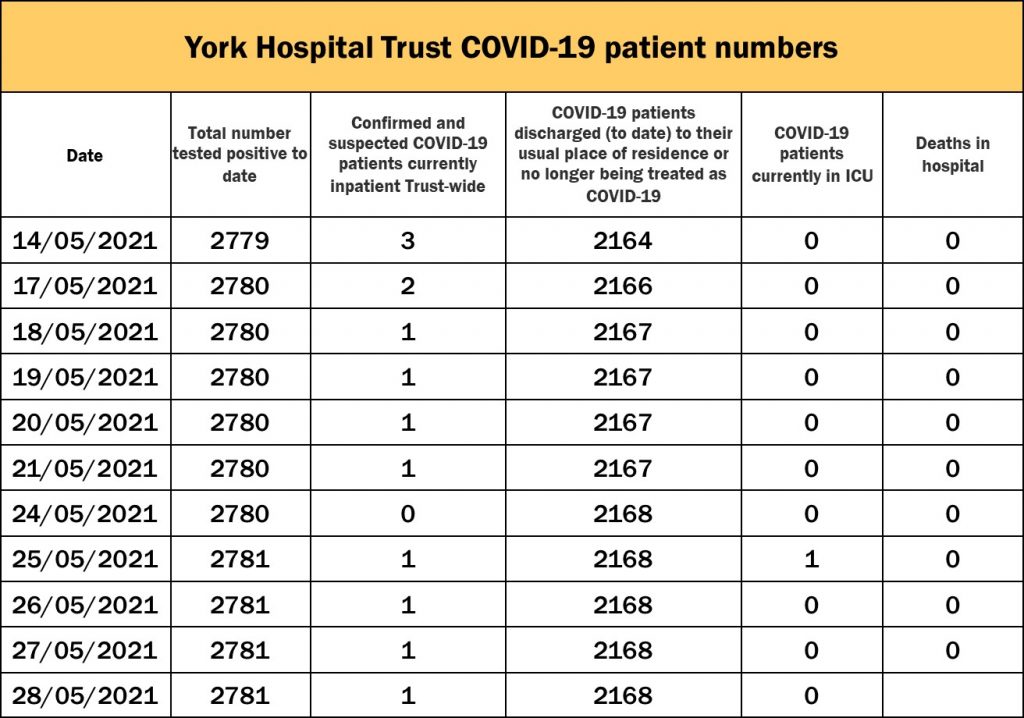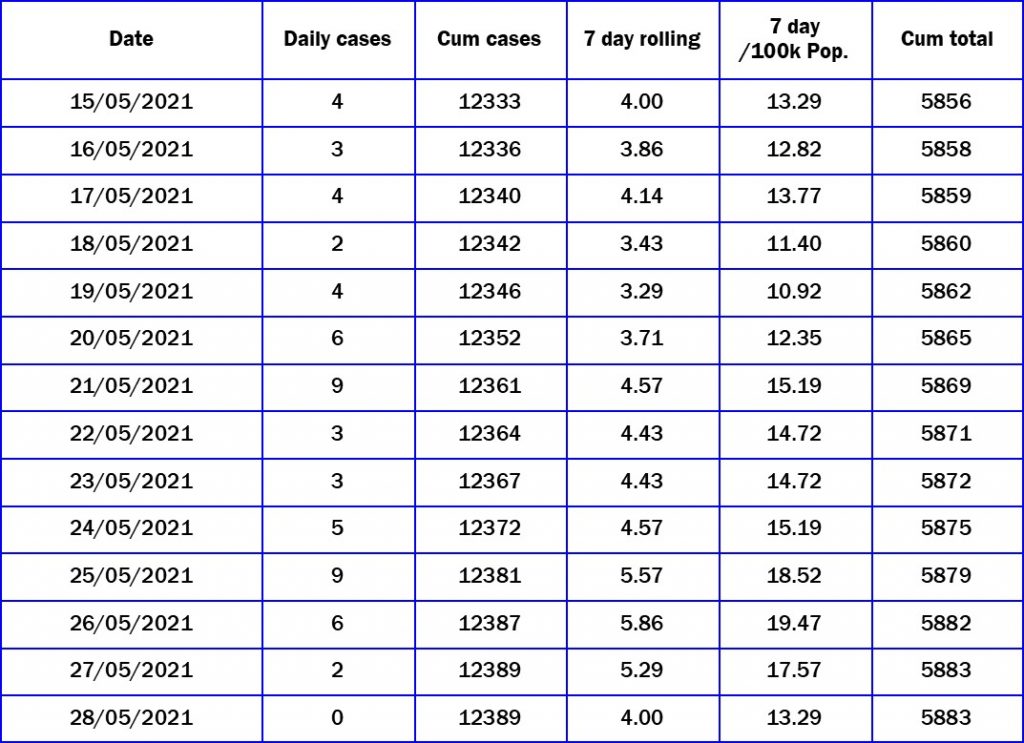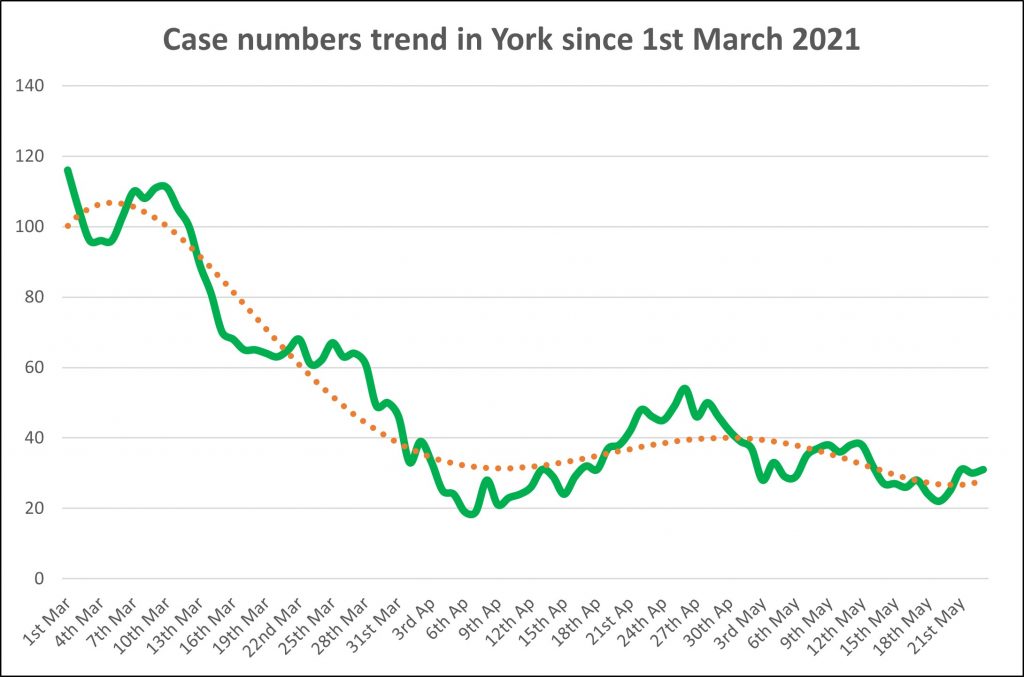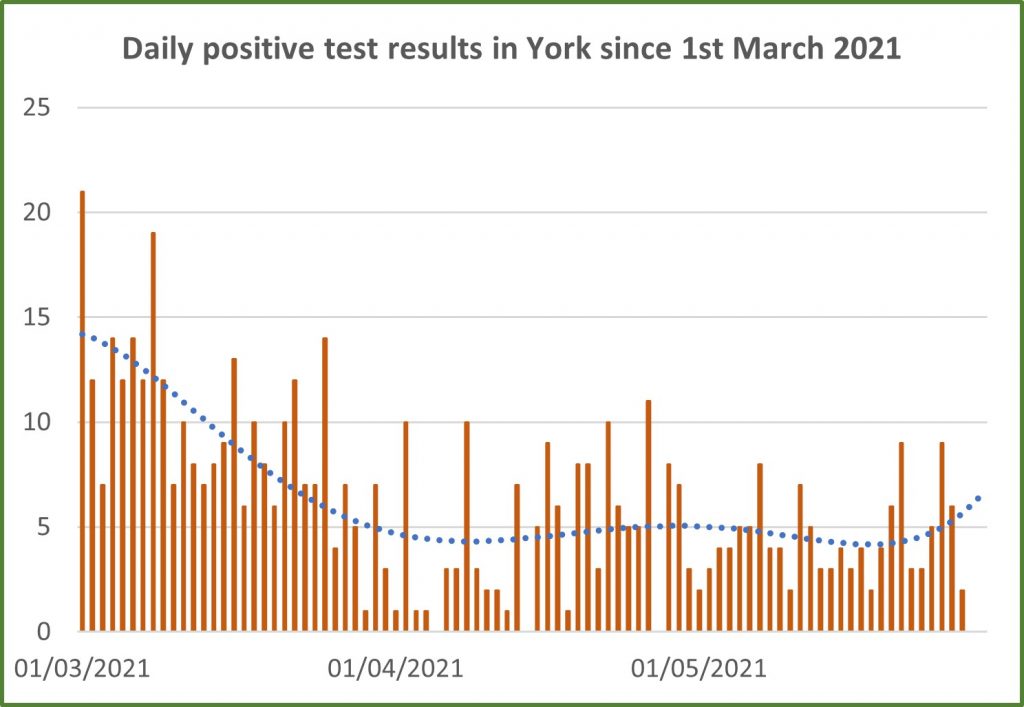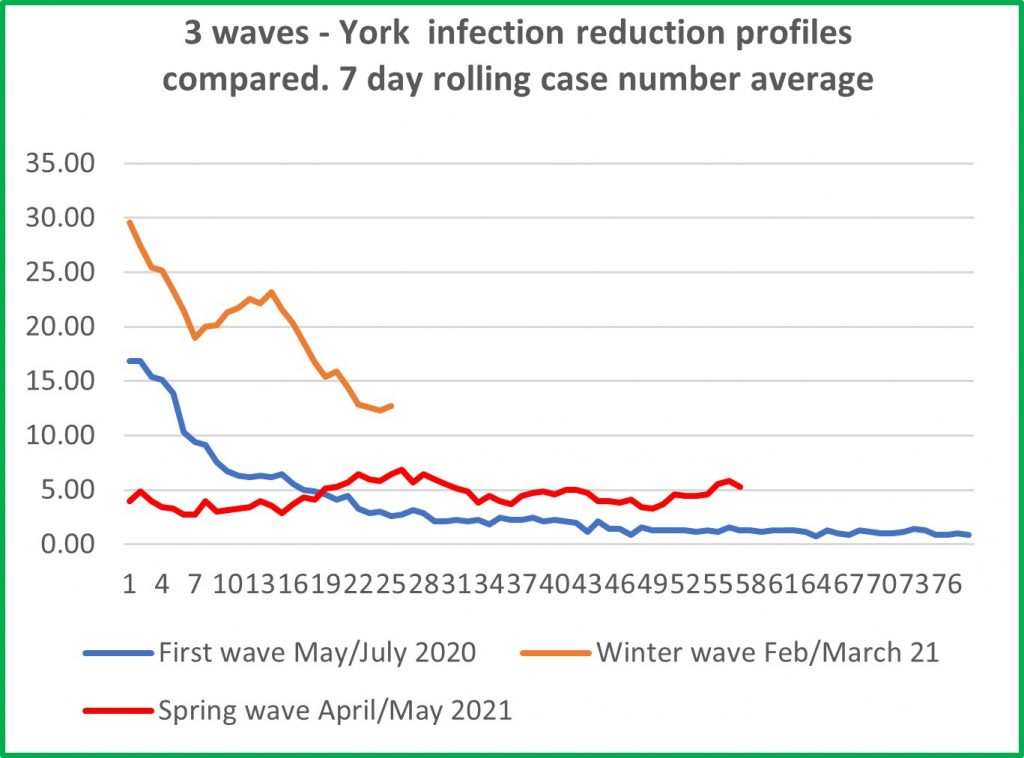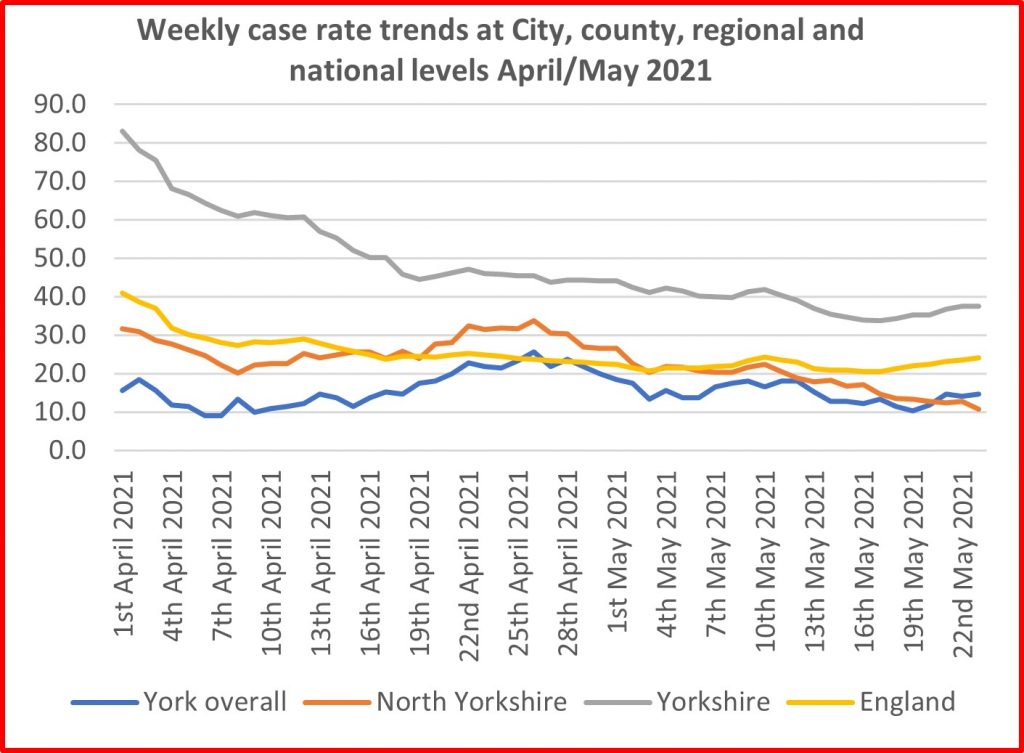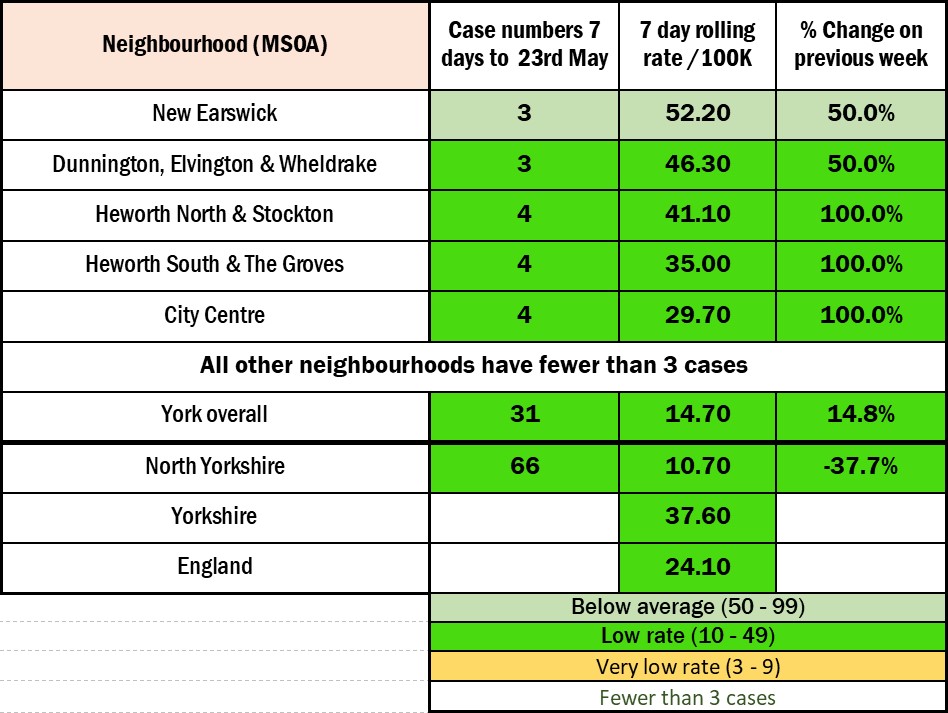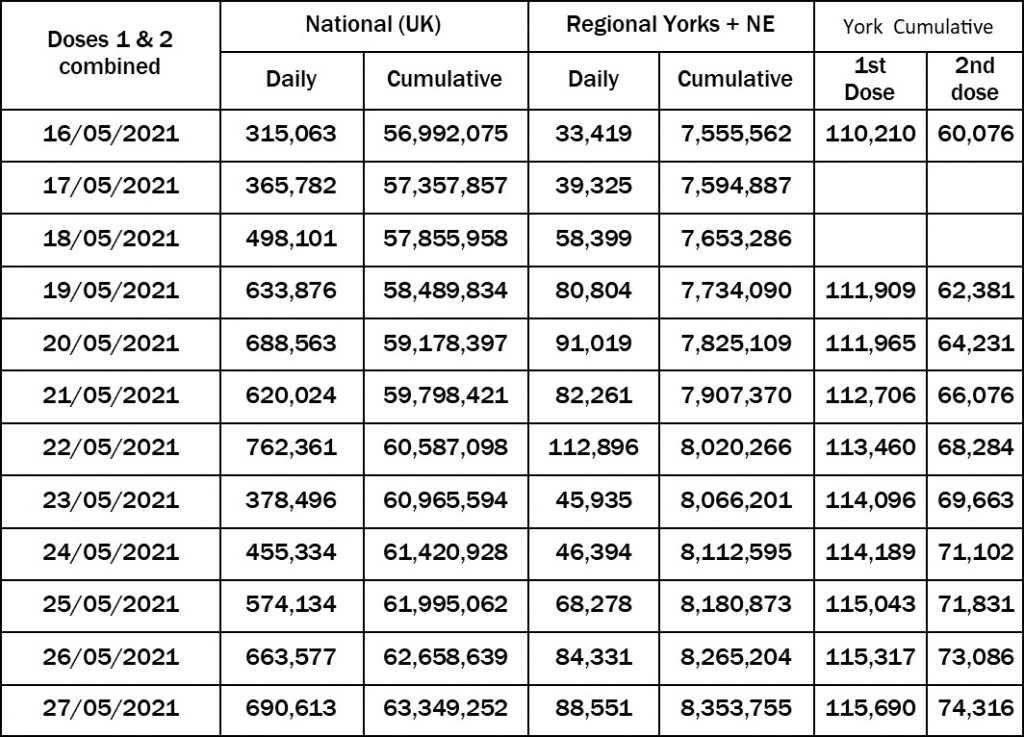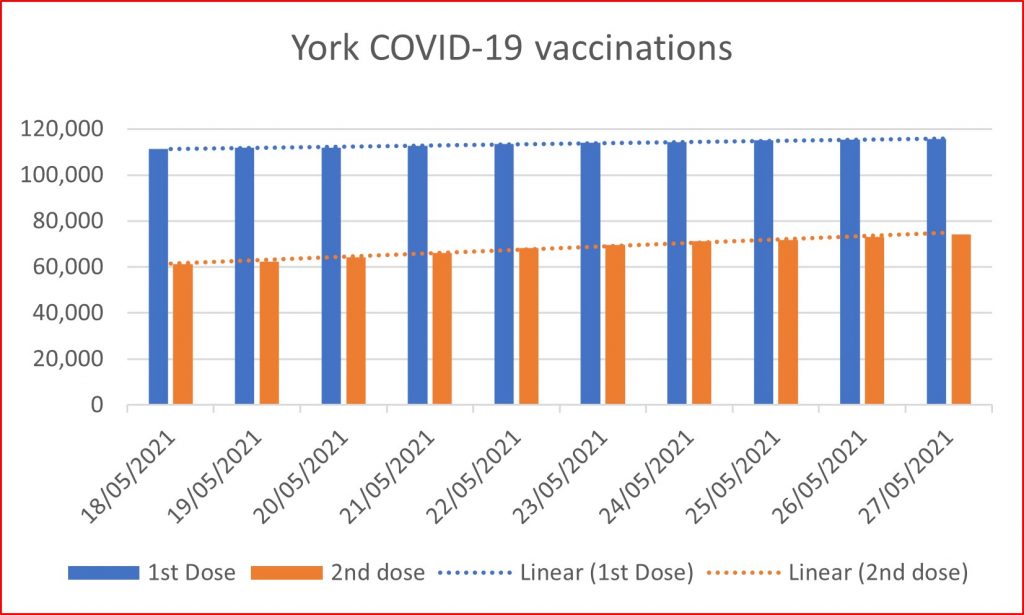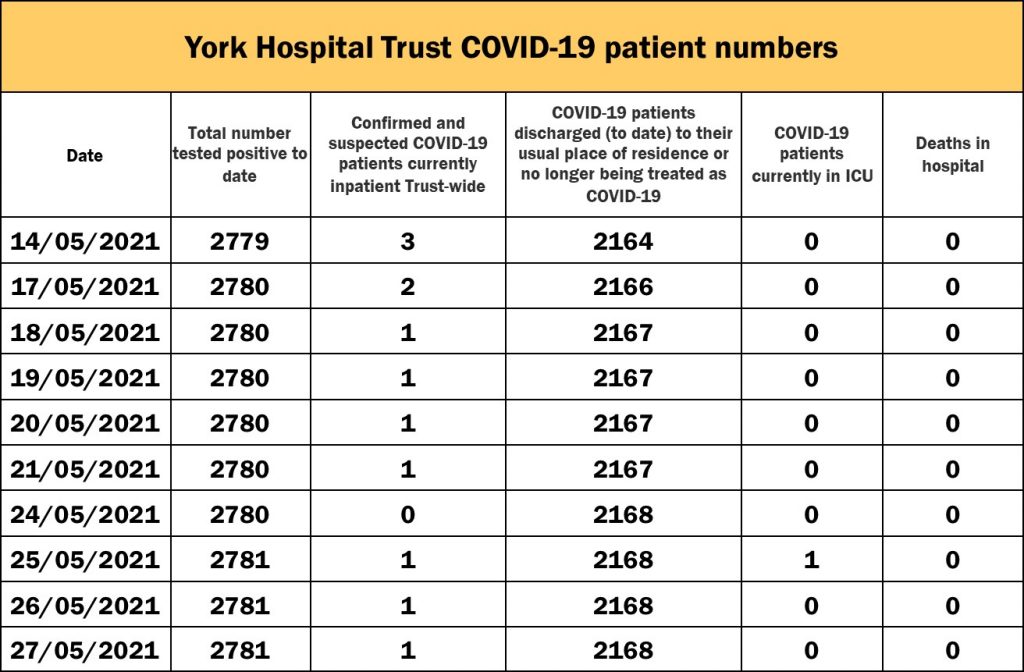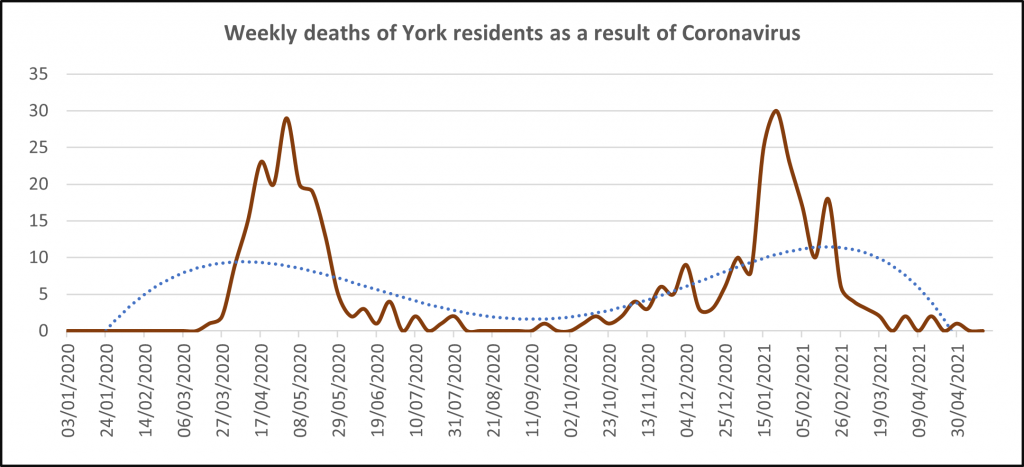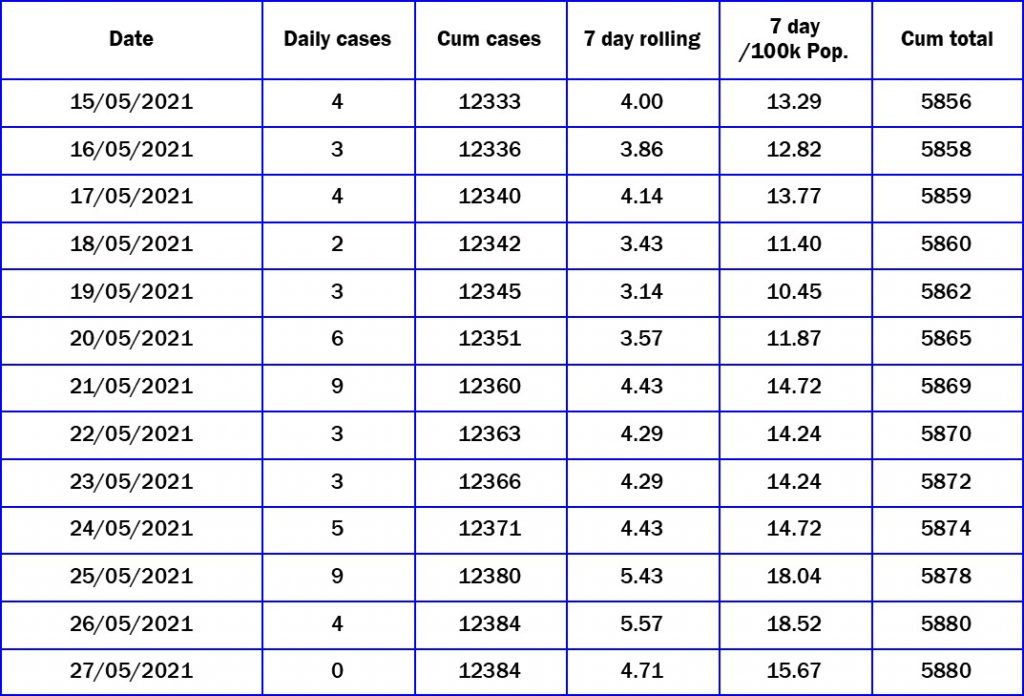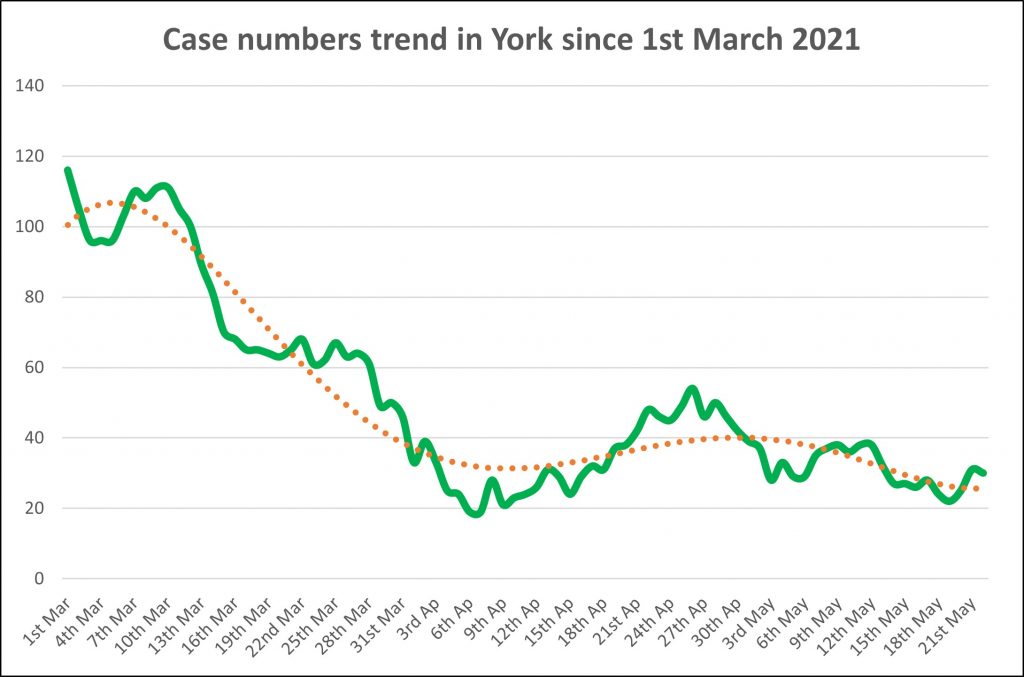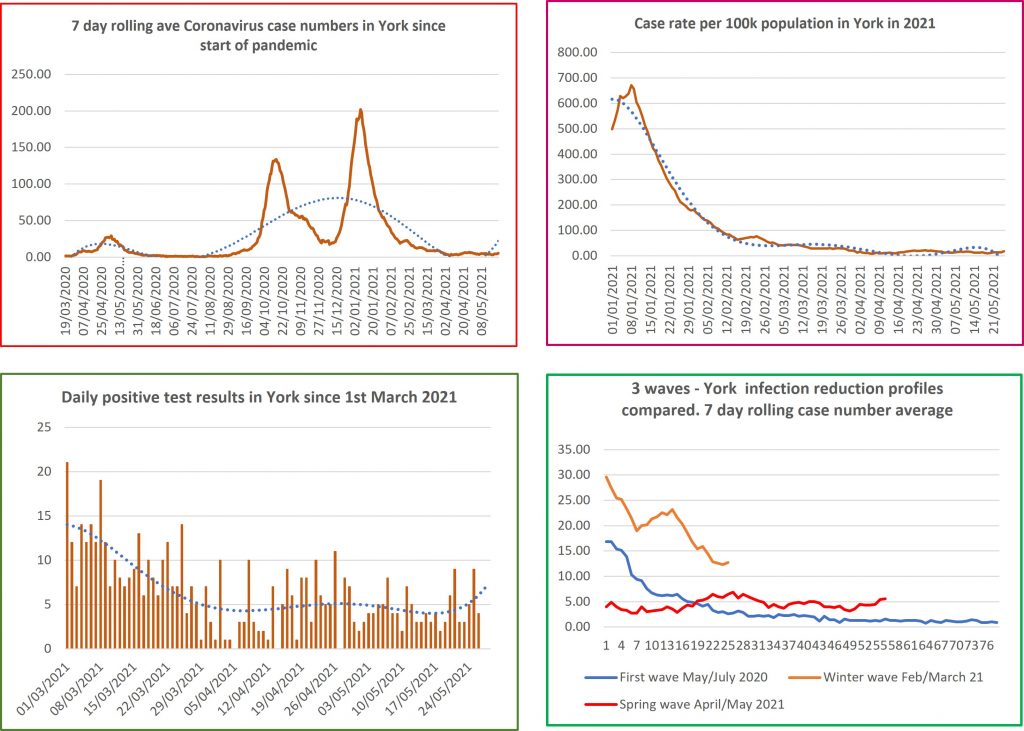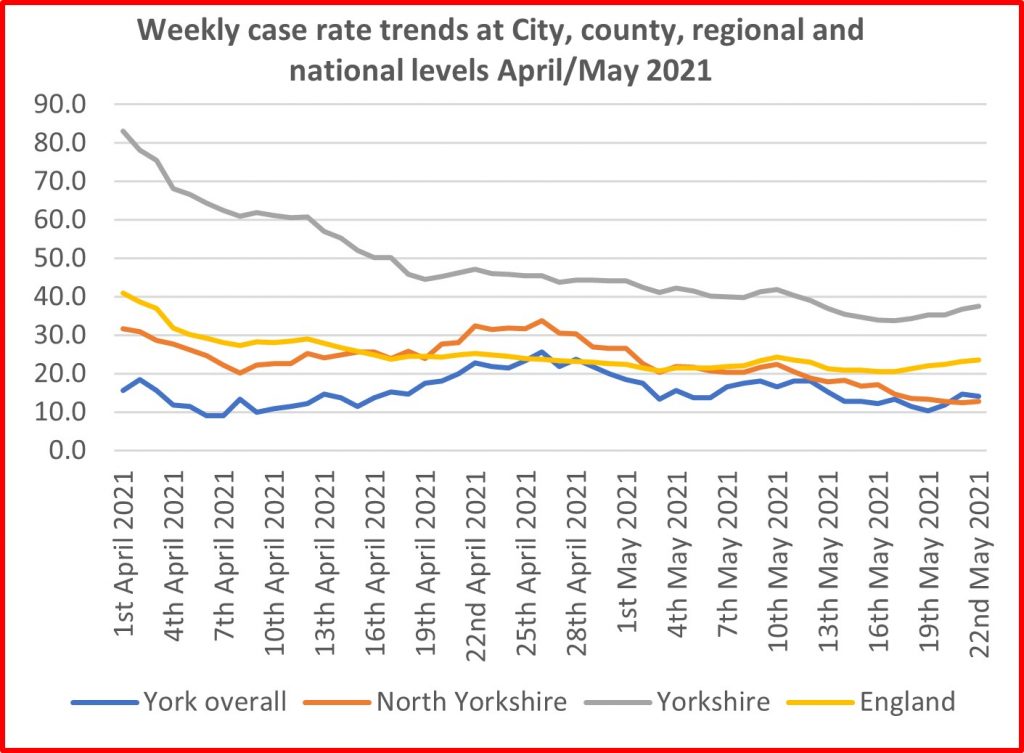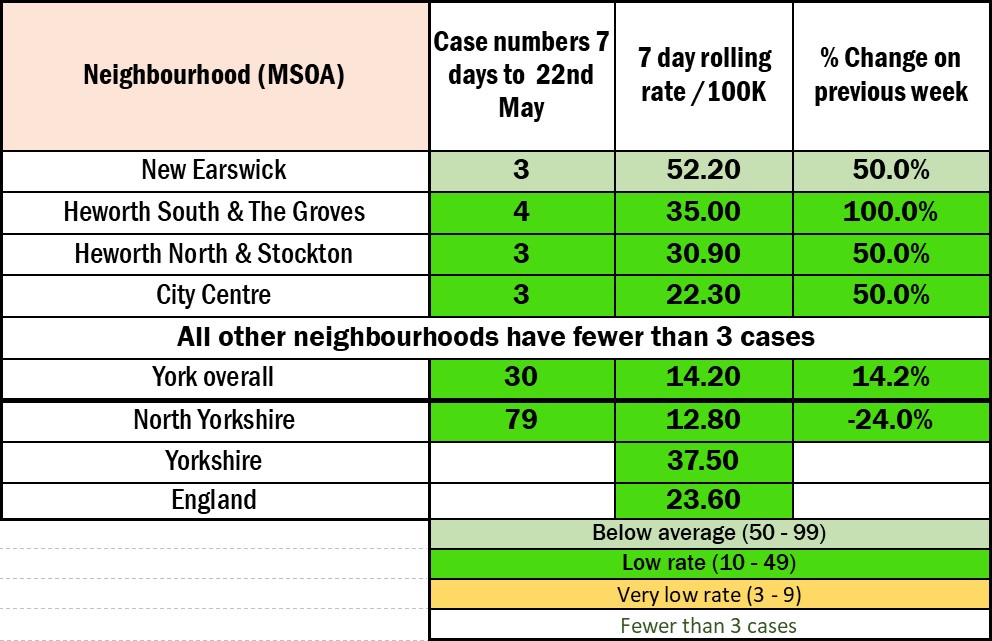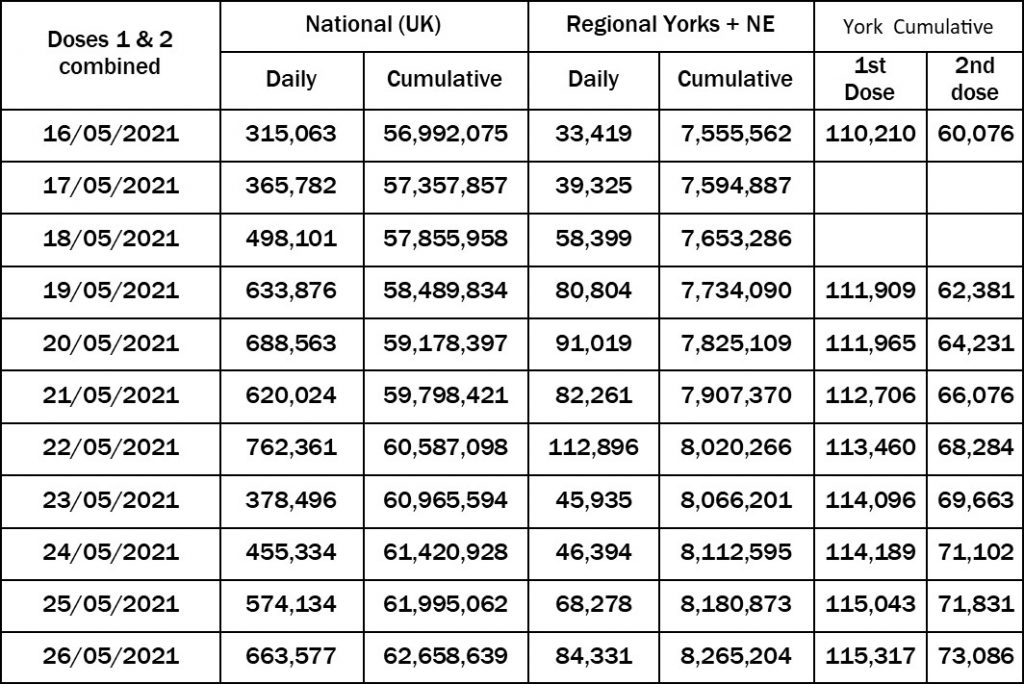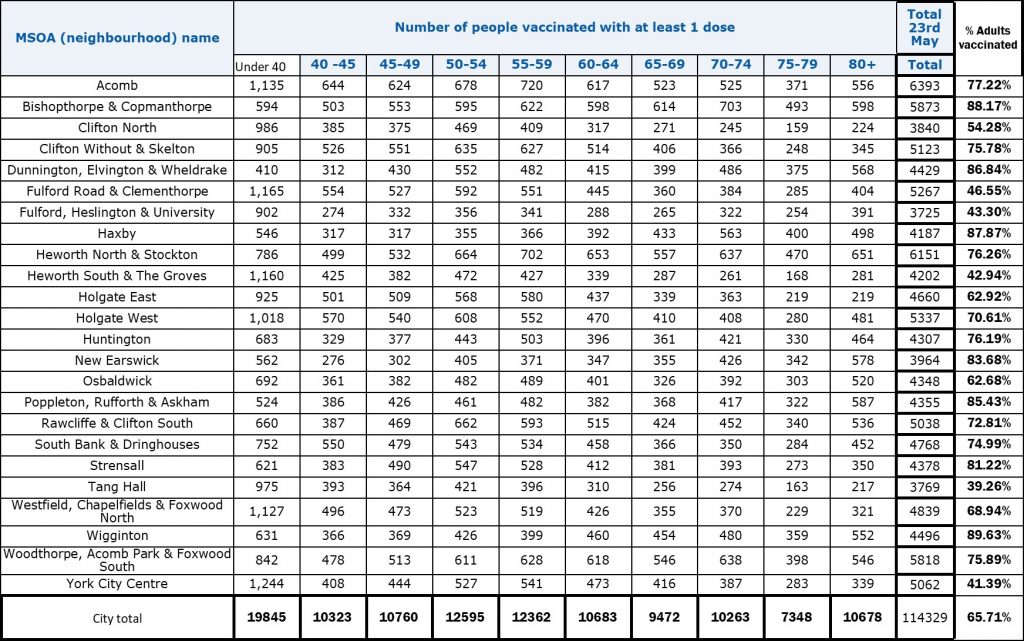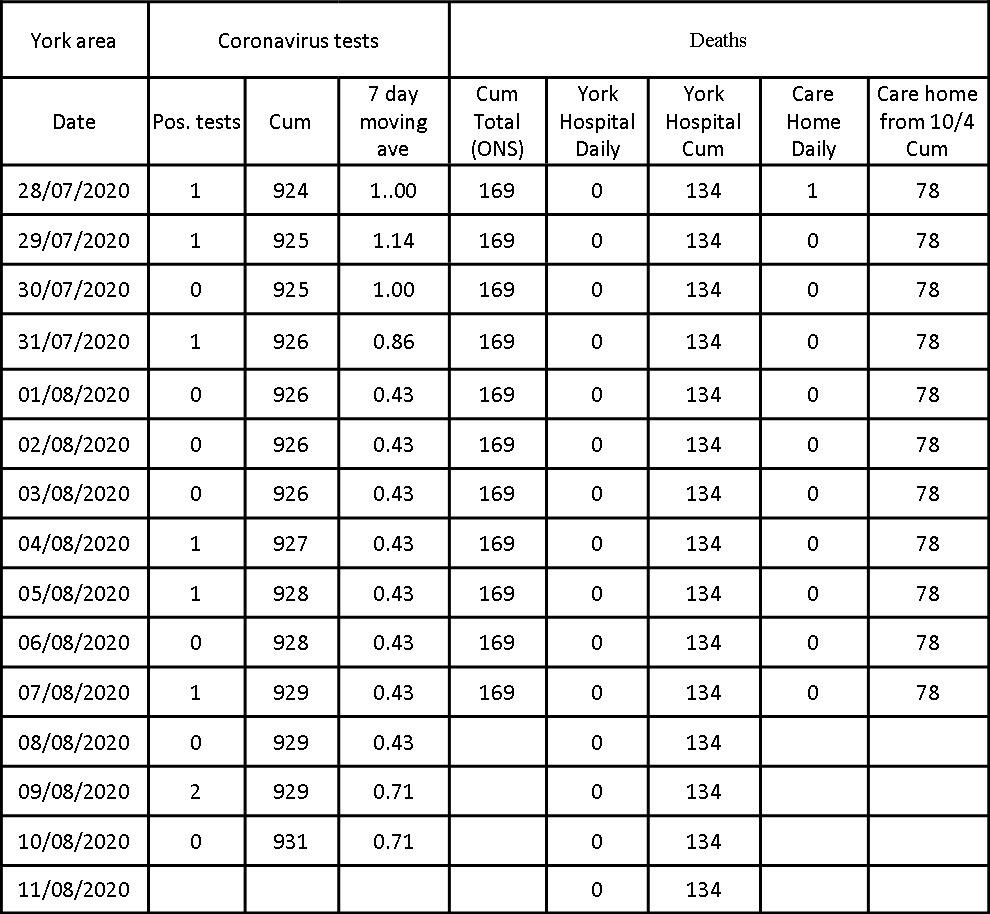Hospital patients and deaths
Test results
Twenty-five positive test results today brings case total up to 12,562
The 24 cases recorded on Tuesday was the highest single day total seen since 20th February.
Case numbers remain at 65 but with a significant trend upwards expected from tomorrow
The rate /100k population is still 30.86 but the spike is in the pipeline will see the rate increase to over 50 next week.
The rate of increase in infection rate has similarities with the surge seen last September/October, but is not yet as severe.
The R rate in the region is now estimated to be over 1 meaning that the pandemic is growing again. This seems to have been caused by the arrival of the more virulent “Delta ” variant coupled to the relaxation of restrictions, school half term etc.
Over 90% of positive test results are being recorded by people aged under 60. The heatmap below shows a high infection rate in the 10 -19 age groups

Infection rates are increasing significantly at all levels.
Neighbourhoods
Vaccinations
775 vaccinations were completed on Thursday in York. That is the lowest this month and down from a peak of 2,322 jabs last Saturday.
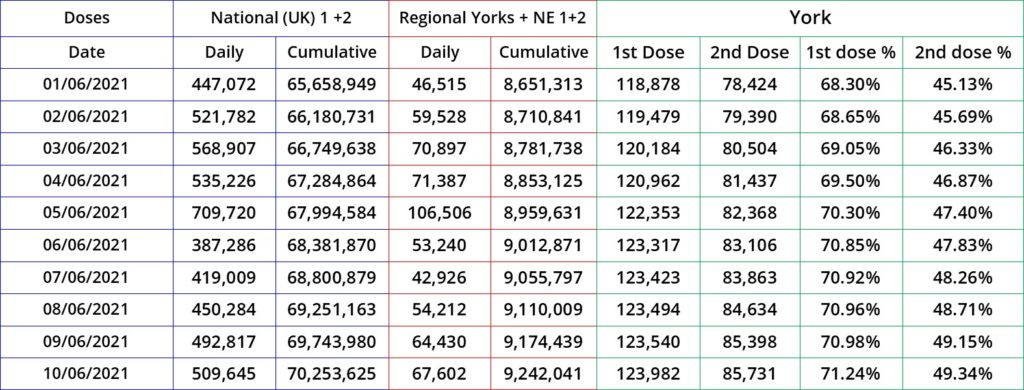
Tests
- 4871 PCR tests were completed during the week ending 6th June 2021
- Of these, 1.3% were positive. That is the same proportion as that found during the previous period
- In addition, 2380 “lateral flow” tests were conducted on 10th June.
Council commentary updated
The York Council’s commentary on the pandemic, which can be found on “open data” has been updated. It is reproduce below.
The data is accurate as at 8.00 a.m. on Friday 11.06.21. Some narrative for the data covering the latest period is provided here below:
People with Covid Symptoms
• NHS Pathways/111 triages – as at 7.6.21 there had been 70 total covid triages in the CYC area in the last 7 days. The peak number of triages was 653 in the 7 day period to 20.9.20.
• As at 10.6.21, the Covid Symptom App estimates 331 per 100,000 in York with symptomatic covid (responses from a sample of 3,954 people). The peak rate was 1,283 on 7.1.21.
Diagnosed cases
• As at 10.6.21 York has had 12,537 cases since the start of the pandemic, a rate of 5,953 per 100,000 of population. The cumulative rate in York is below the national (7,040) and regional (7,404) averages.
• The PHE ‘Exceedance’ rating compares the no. of new cases over a 14 day period with the previous 6 weeks and provides a RAG rating to indicate if the previously observed trend in the number of new cases is worsening. The latest rating for York (7.6.21) is Red.
• The provisional rate of new Covid cases per 100,000 of population for the period 2.6.21 to 8.6.21 in York is 46.5 (98 cases). (Using data published on Gov.uk on 10.6.21).
• The latest official “validated” rate of new Covid cases per 100,000 of population for the period 30.5.21 to 5.6.21 in York was 30.9 (65 cases). The national and regional averages at this date were 50.3 and 54 respectively (using data published on Gov.uk on 10.6.21).
• York is currently ranked 65th out of 149 Upper Tier Local Authorities (UTLAs) in England with a rank of 1 indicating the lowest 7 day rate.
• For the 7 day period 29.5.21.to 4.6.21, the number of cases in each ward varied from 0 to 7 and rates varied from 0 to 96.5 per 100,000. 3 wards had zero cases.
• The rate of new Covid cases per 100,000 of population for the period 30.5.21 to 5.6.21 for people aged 60+ in York was 2.0 (1 case). The national and regional averages were 10.3 and 12.0 respectively.
• As at 8.6.21, the latest 7 day positivity rate in York (Pillar 2 PCR tests only) was 2.66%. The national and regional averages are 3.3% and 3.9% respectively.
• As at 8.6.21 the latest 7 day positivity rate in York (Pillar 2 Lateral Flow Tests only) was 0.26%. The national and regional averages are 0.3% and 0.3% respectively.
• As at 8.6.21 the latest 7 day positivity rate in York (Pillar 1 tests only) was 0.2%. The national average is 0.4%.
• As at 4.6.21 York University reported 1 individual within the University community who was currently self-isolating because they have had a positive COVID-19 test. The peak number was 331 on the 19.10.20.
• As at 7.6.21 York St. John reported 2 individuals within the University community who were currently self-isolating because they have had a positive COVID-19 test. The peak number was 82 on the 8.10.20.
Contact Tracing
• Local Contact Tracing. Between 10.3.21 and 4.6.21, 291 referrals had been actioned by the local contact tracing service. Of the referrals actioned, 273 (93.8%) were successful and 18 (6.2%) were unable to be reached via phone or home visit, but guidance leaflets were posted where possible. (NB on the 10.3.21 the local CYC team became responsible for contacting all cases rather than just those that the national team could not contact).
Cases in Residential Care Settings
• As at 10.6.21 there were 0 care homes in the CYC area with confirmed Covid-19 infection (at least 1 case of either a staff member or resident).
• The latest ‘outbreak’ (2+ cases) in a residential care setting in York were reported by PHE on 25.2.21 (1 home).
Cases amongst School Aged Children
• In the 7 days up to 7.6.21 there were 14 children of primary or secondary school age who tested positive (across 8 different schools).
COVID Bed Occupancy in York Hospital
• As at 8.6.21 there were 2 confirmed Covid-19 patients in General/Acute beds. The peak number was 157 on 19.1.21.
• As at 8.6.21 there were 0 confirmed Covid-19 patients and 0 suspected Covid-19 patients in the Intensive Treatment Unit. The peak number for people in ITU was 19 on 10.5.20.
R Number
• The ‘R’ value (the number of people that one infected person will pass on a virus to, on average) for the North East and Yorkshire area on 4.6.21 was estimated to be in the range 0.9 to 1.1. The previous estimate was (0.8 to 1.0) on 28.5.21.
Variants of Concern
• Published data from Public Health England shows that in York, up to 2.6.21, there had been less than five confirmed cases of the Delta Variant of Concern (VOC-21APR-02) which was first identified in India. More recent provisional data is available on cases where the test was processed in a laboratory which can identify Variants of Concern. This shows that over half of new cases in the most recent month in York were likely to be the Delta Variant.
Total Vaccinations
• As at 9.6.21 a total of 123,812 CYC residents have had the first dose of the vaccine. This represents 58.8% of the estimated total population of York and 71.2% of the estimated adult (18+) population of York.
• As at 9.6.21 a total of 85,501 CYC residents have had both doses of the vaccine. This represents 40.6% of the estimated total population of York and 49.1% of the estimated adult (18+) population of York.
Deaths
The two sources about deaths from Covid-19 at LA level are ONS data and local registrar data. They are derived from the same source (civil registration data). ONS data is more comprehensive as it includes deaths of York residents which have occurred and been registered outside York. Local registrar data provides a breakdown by age and gender. The most recently available data is summarised below:
• ONS Weekly data: In the most recent period (Week 21: 22.5.21 to 28.5.21) 0 Covid-19 deaths were recorded as having occurred for CYC residents. The last death from Covid-19 for a CYC resident occurred in Week 17 (24.4.21 to 30.4.21)
• ONS Cumulative data: Since the start of the pandemic, for deaths occurring up to 28th May 2021 and registered up to 5th June 2021, 396 Covid-19 deaths were recorded as having occurred for CYC residents (228 in hospital, 135 in care homes, 25 at home/elsewhere and 8 in a hospice). The number of deaths per 100,000 of population in York is 188.02 which is lower than the national average of 232.44
• Age / Gender breakdown (using registrar data): The average age of the CYC residents who died was 82.1, with an age range of 44-104. The age profile of the CYC residents who have died is older than the national average (79.5% were aged 75+ compared with 73% nationally). 47.9% of the CYC residents who died were male. The national average is 54.4%.

